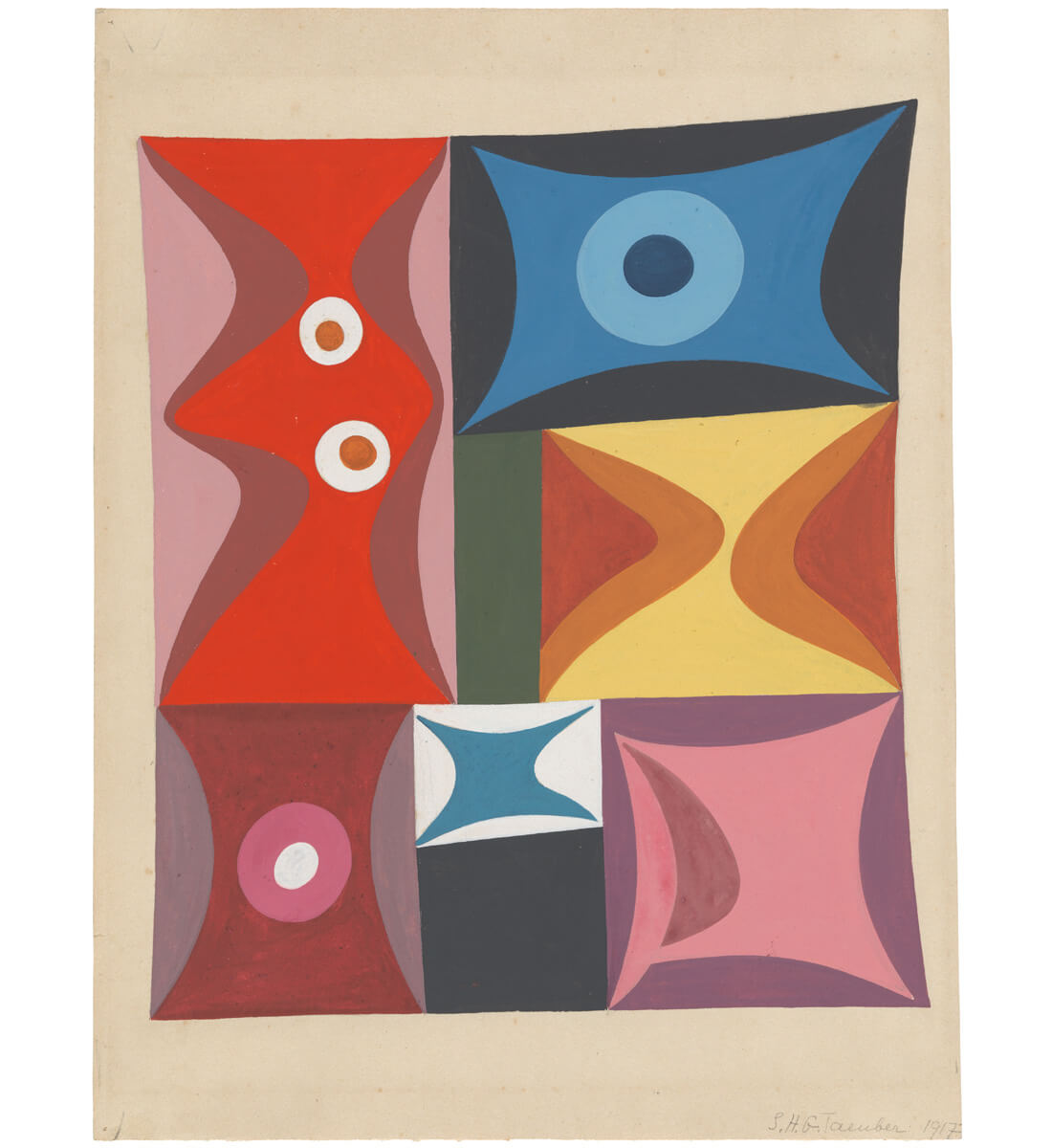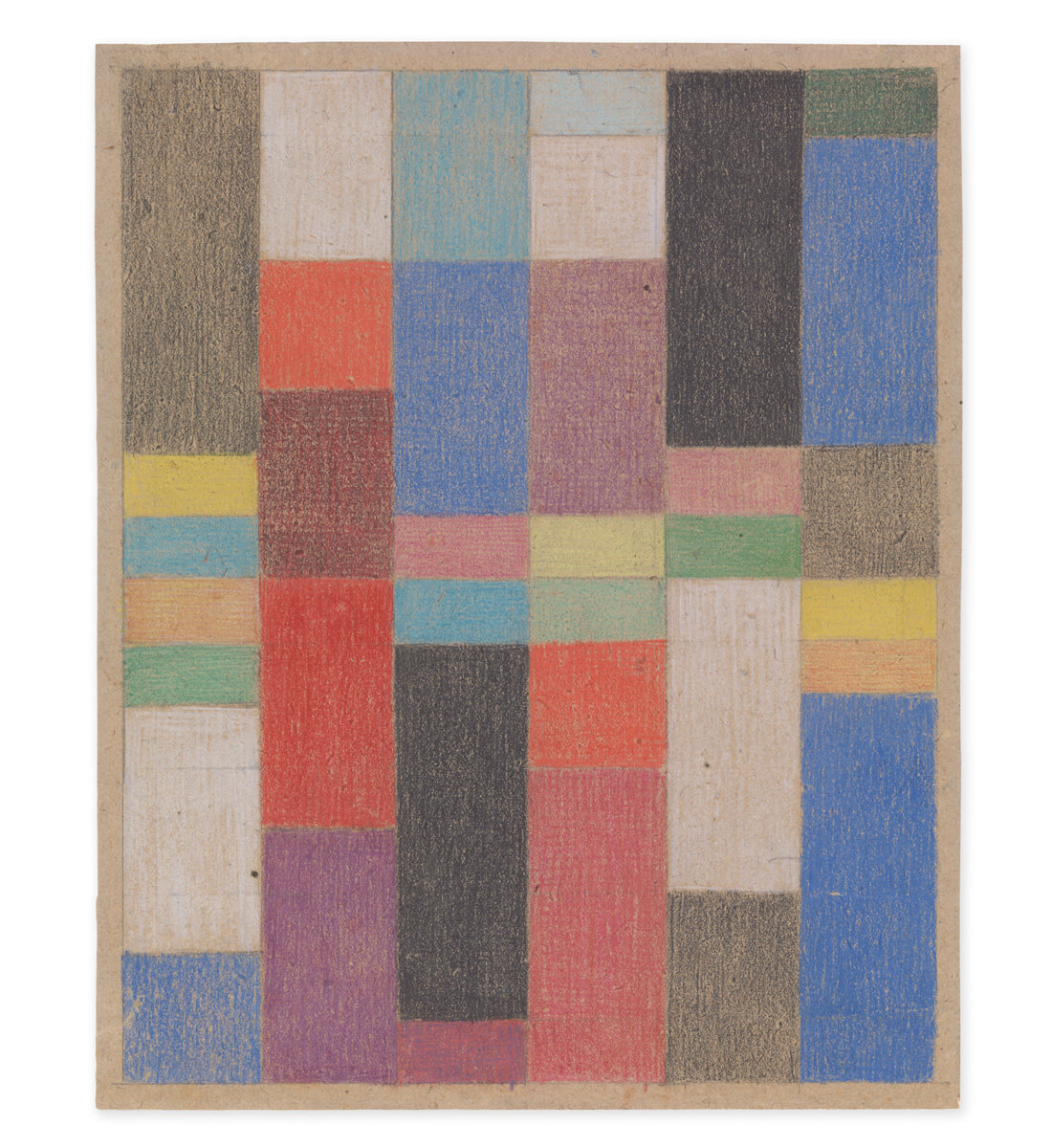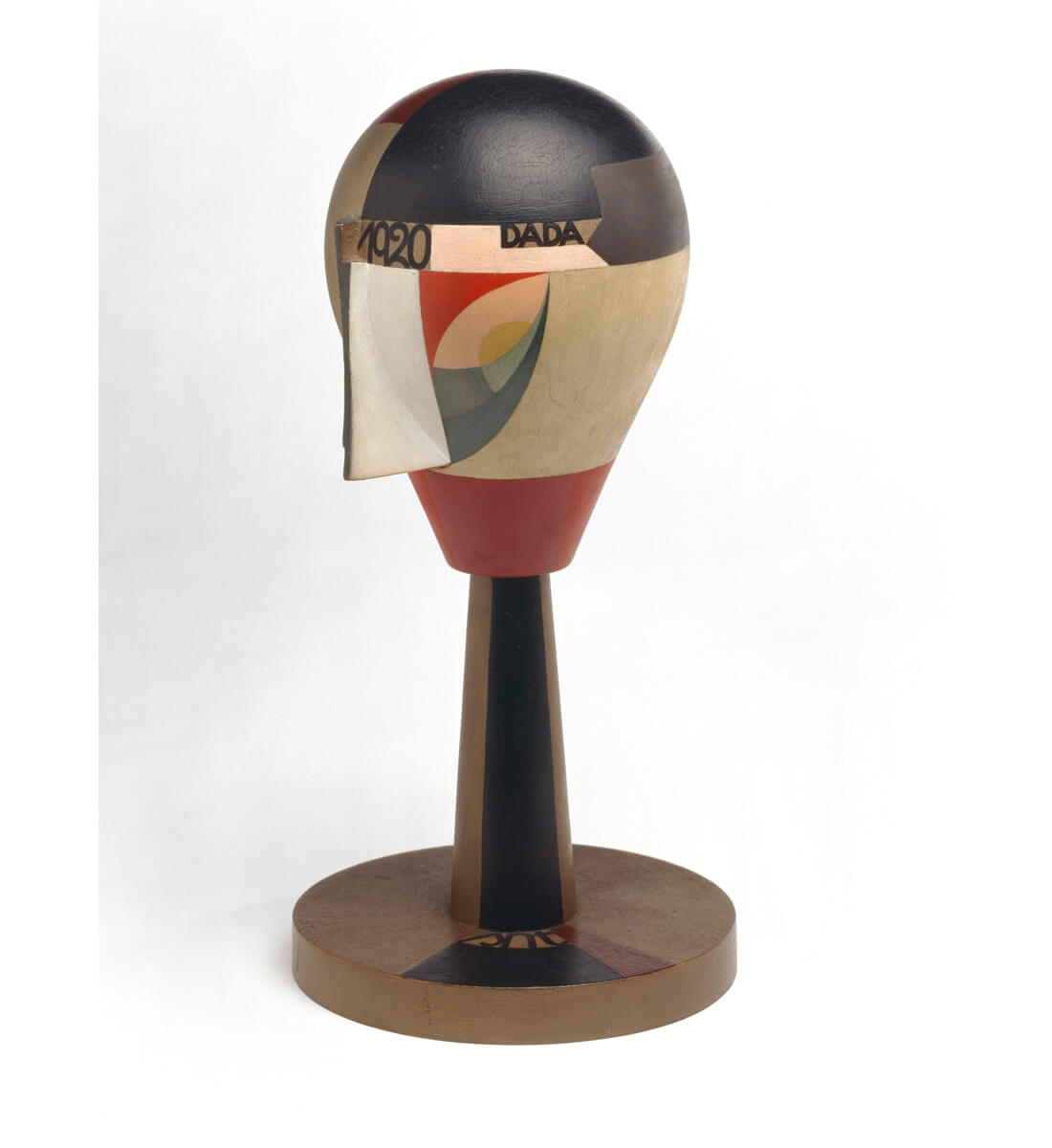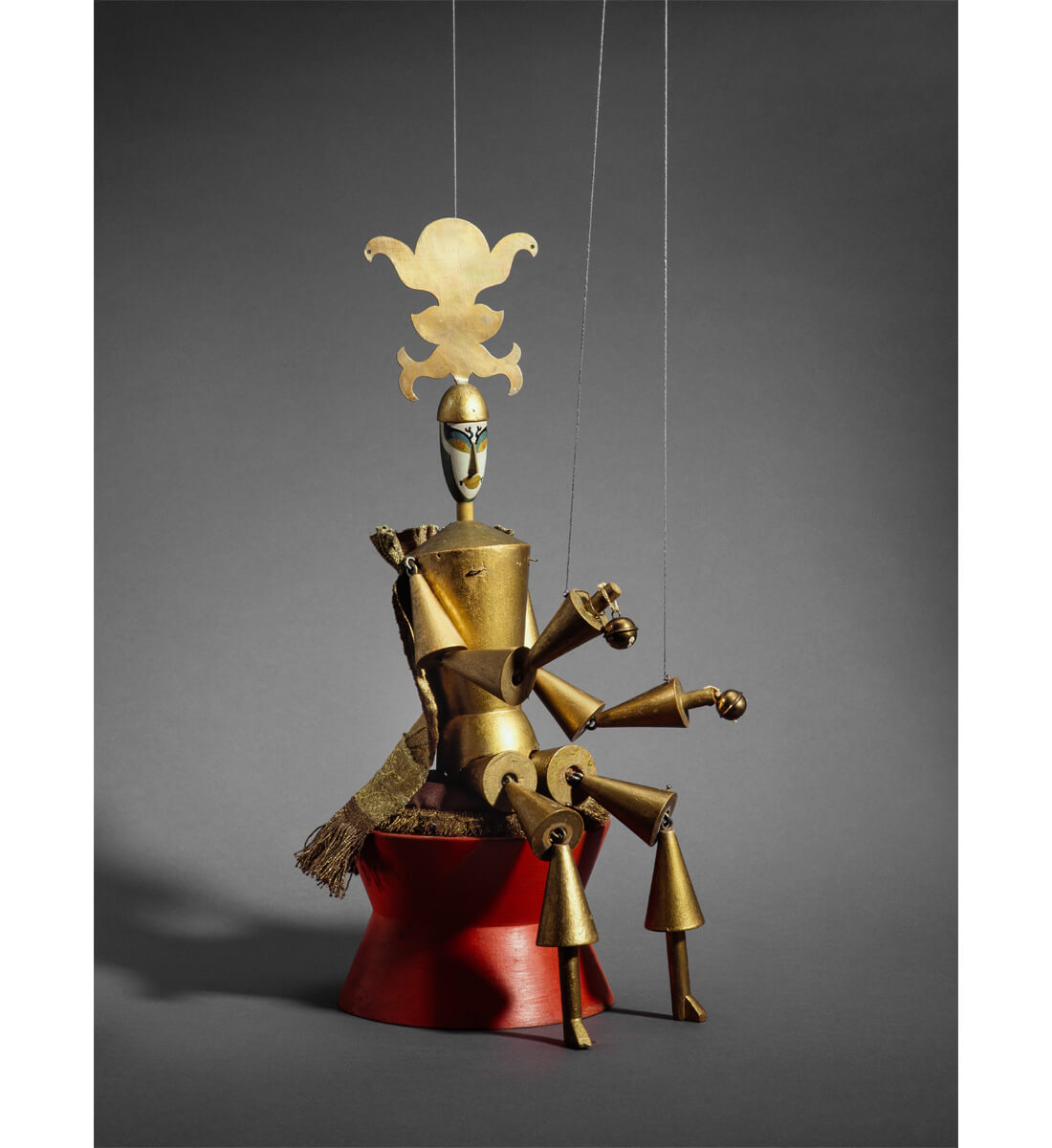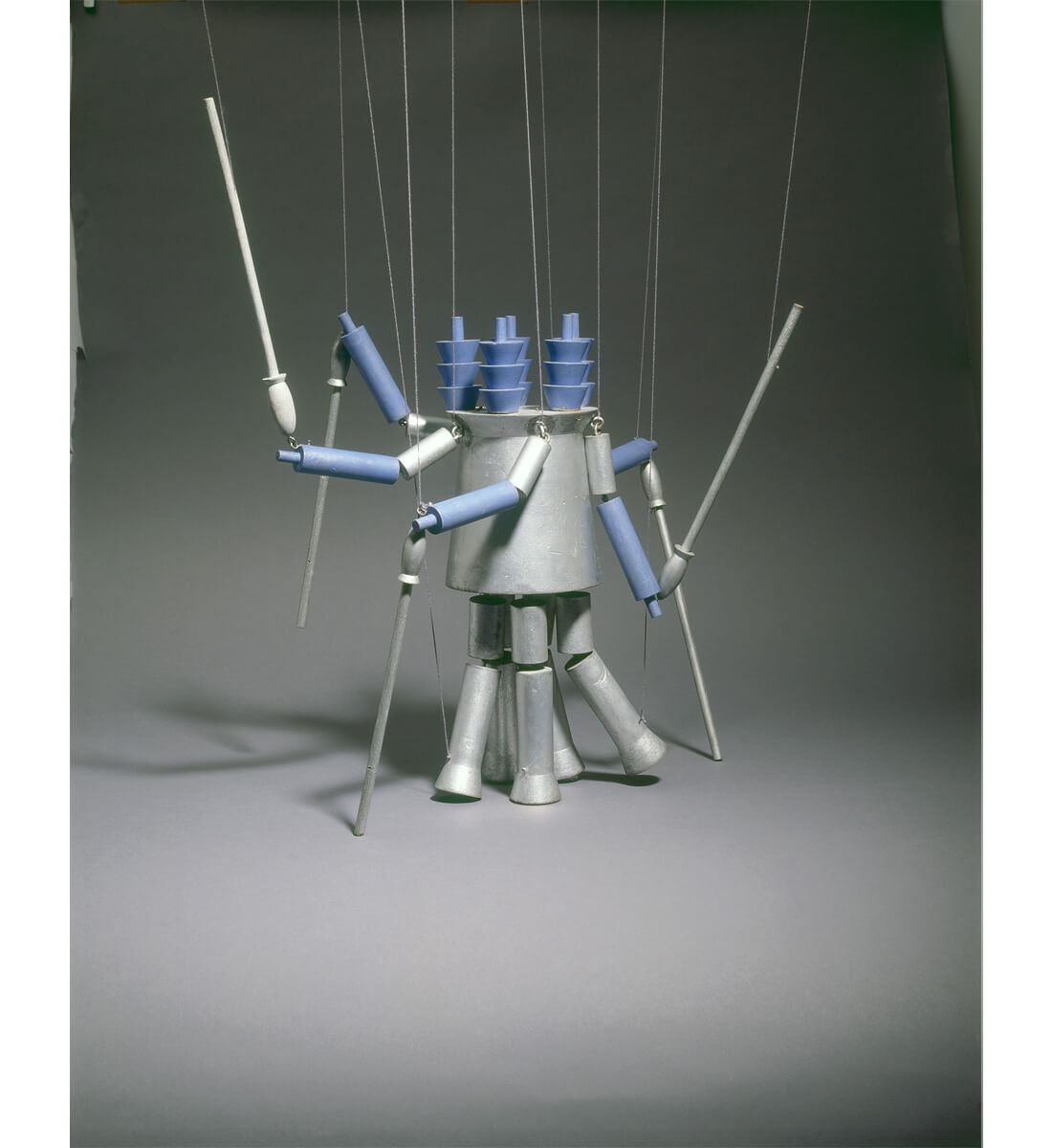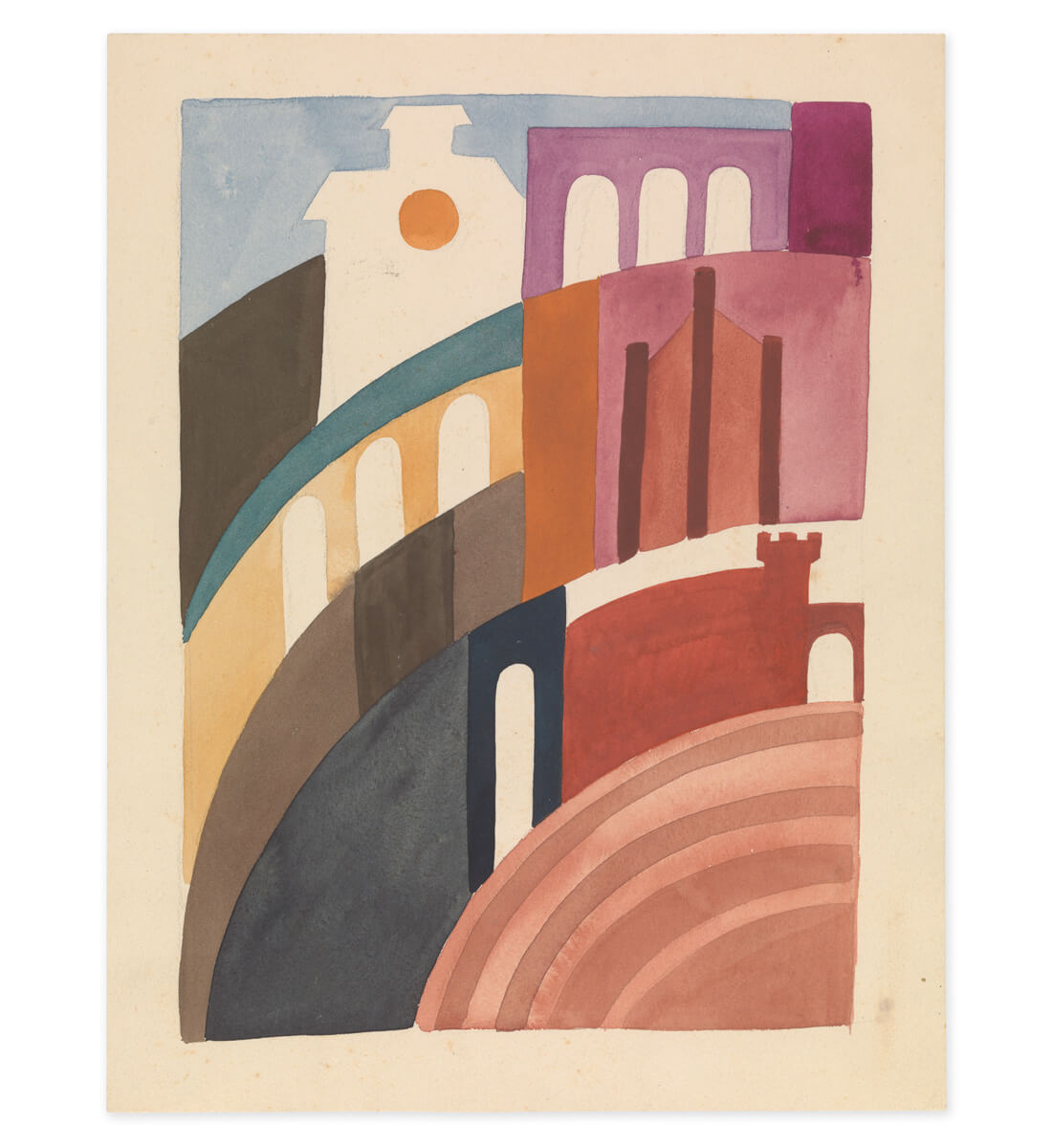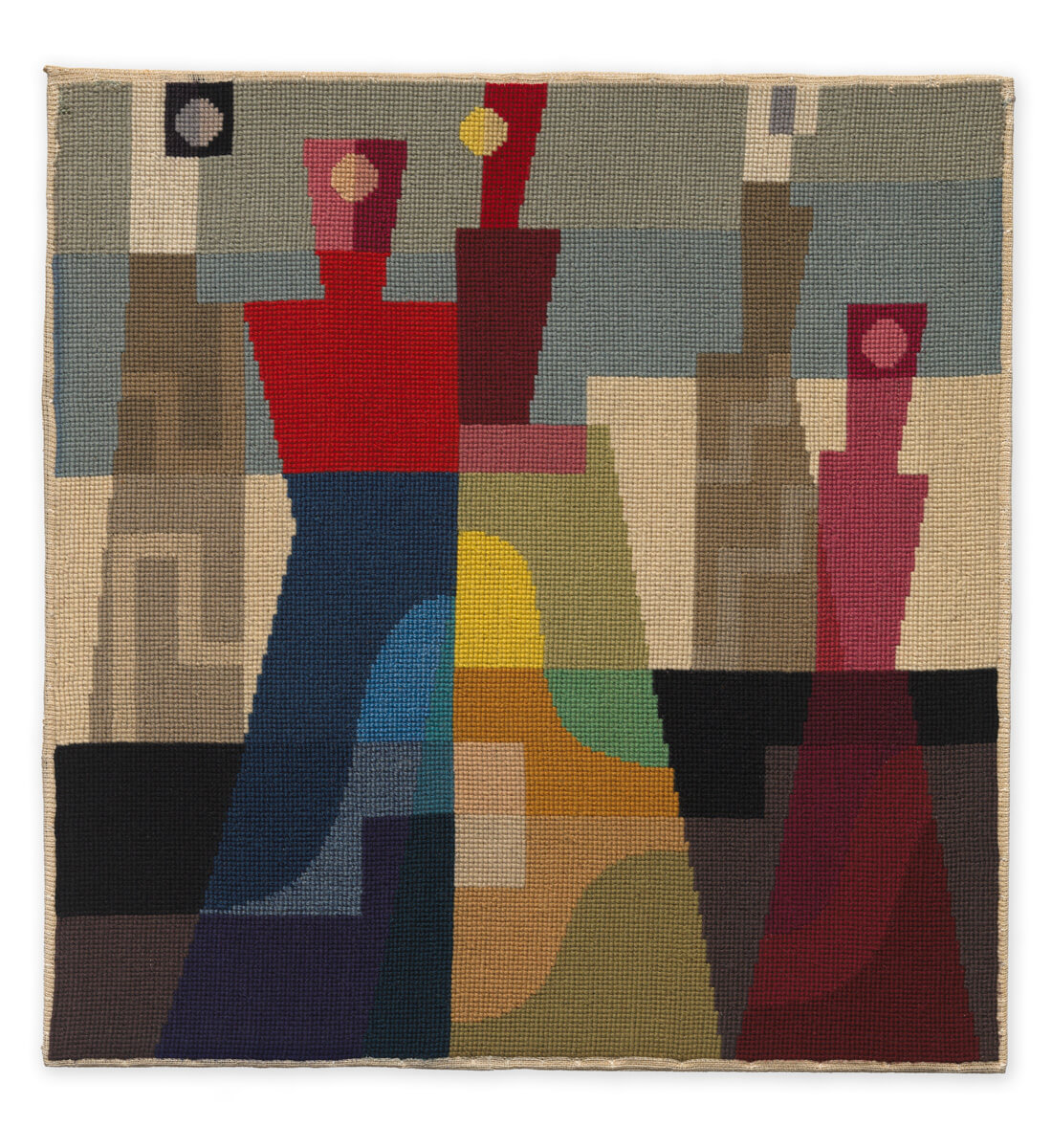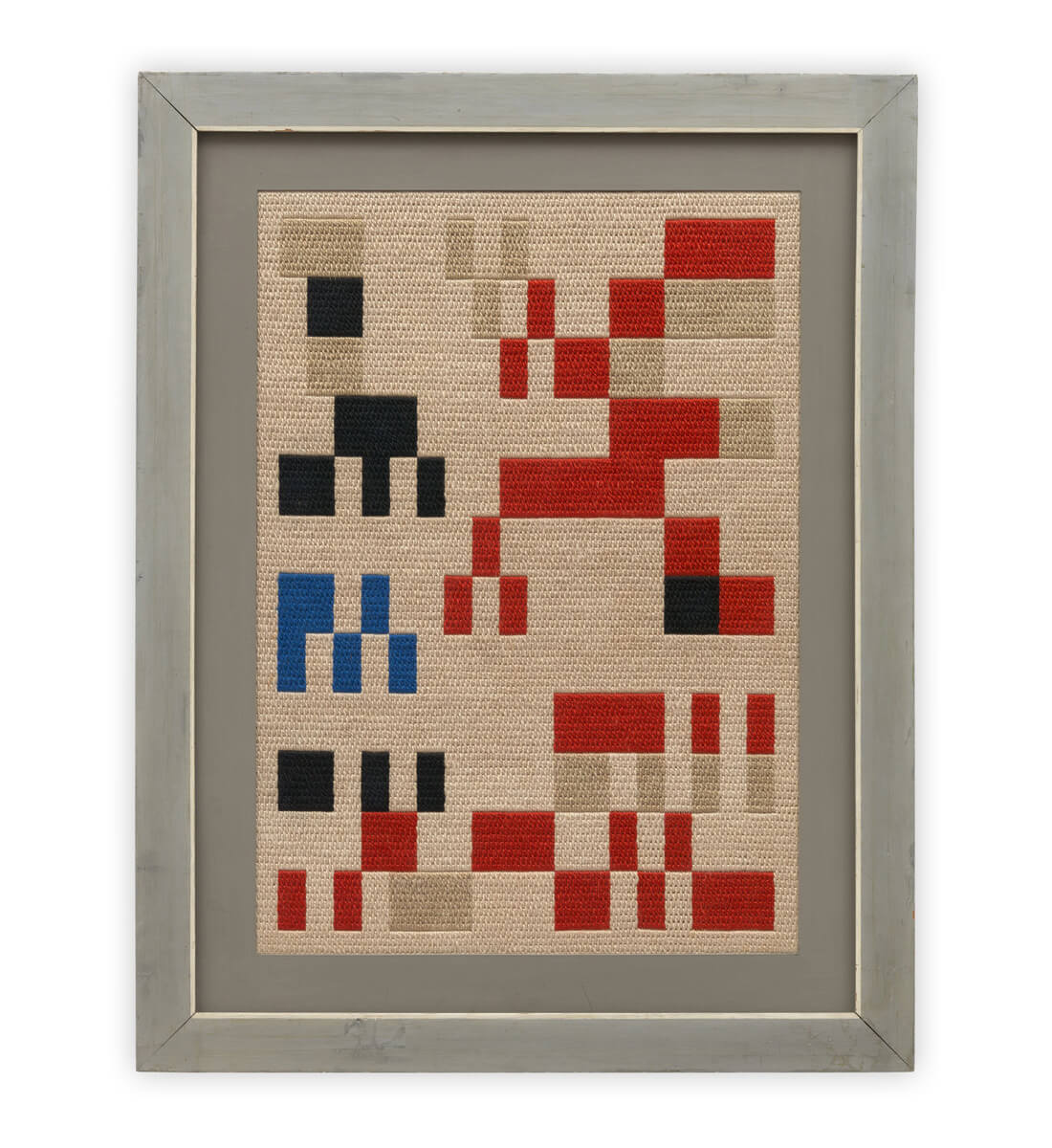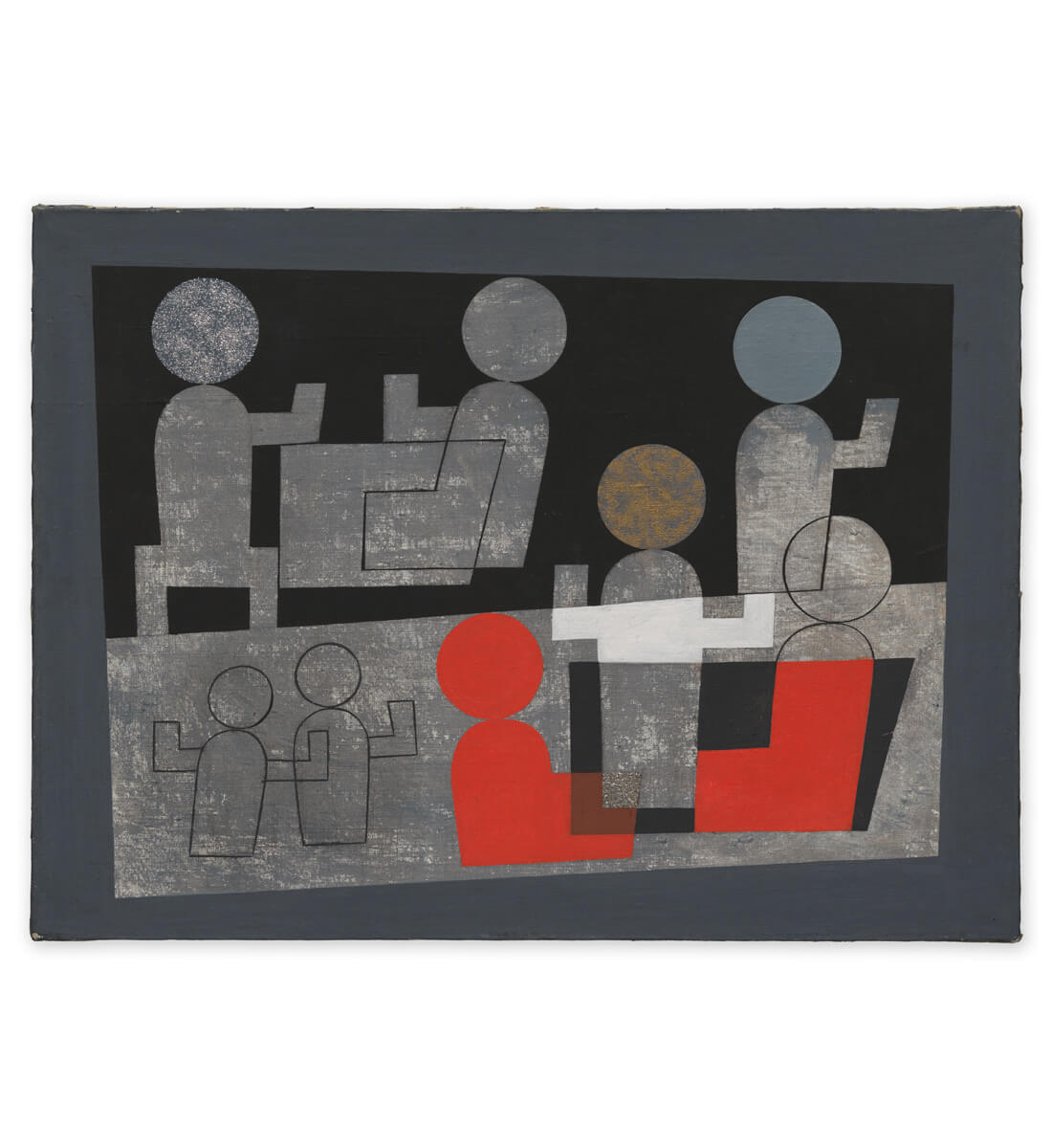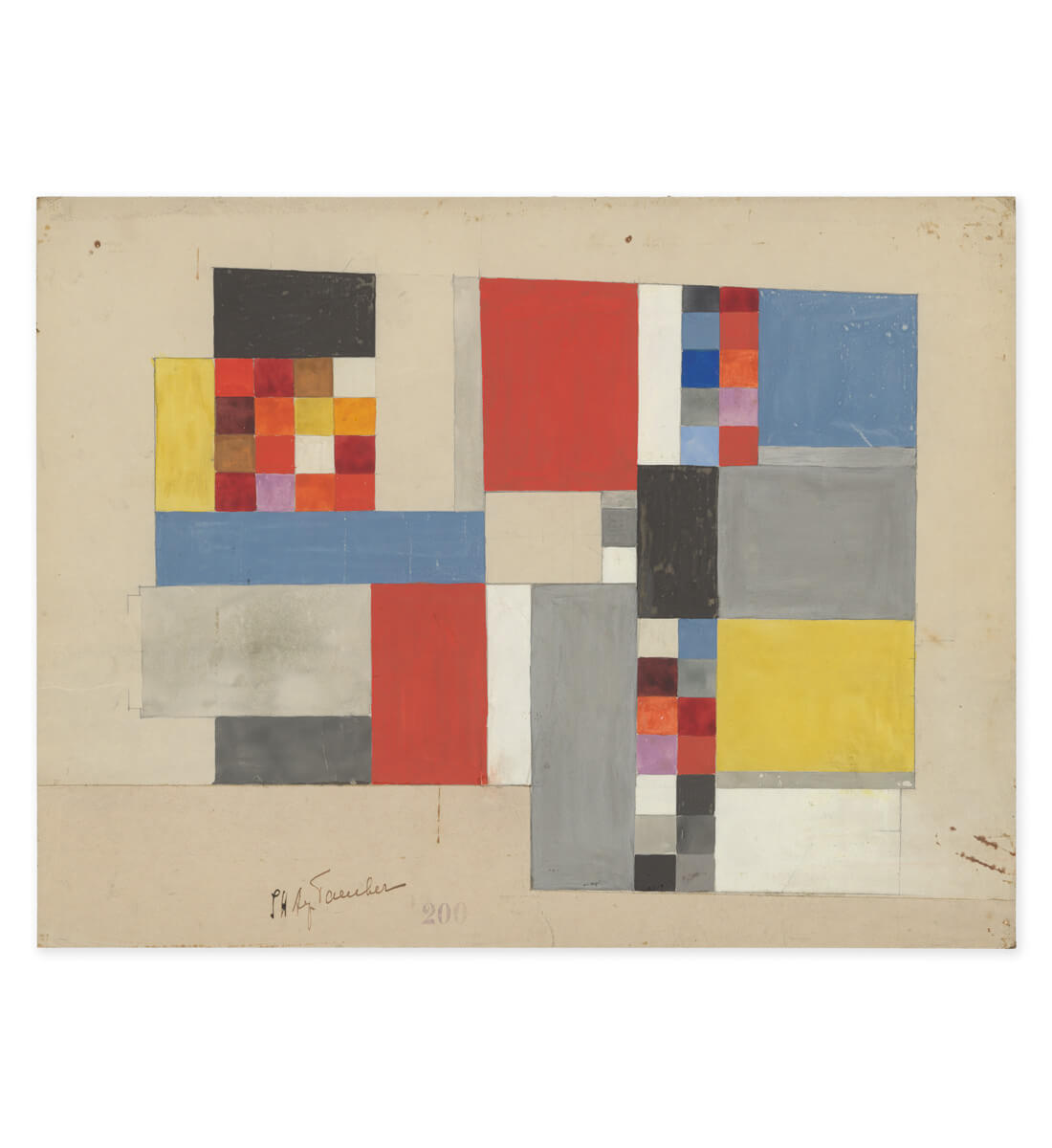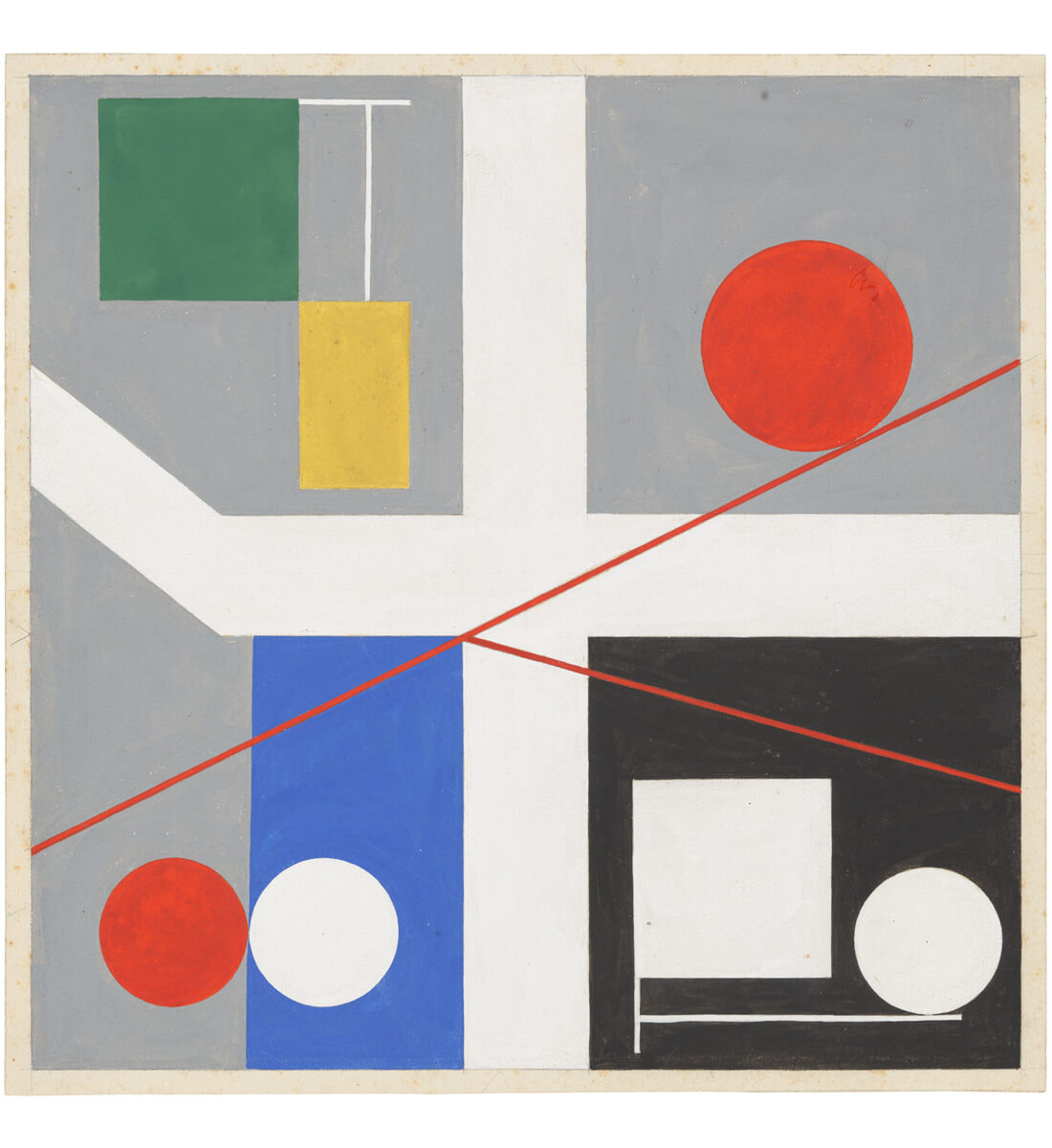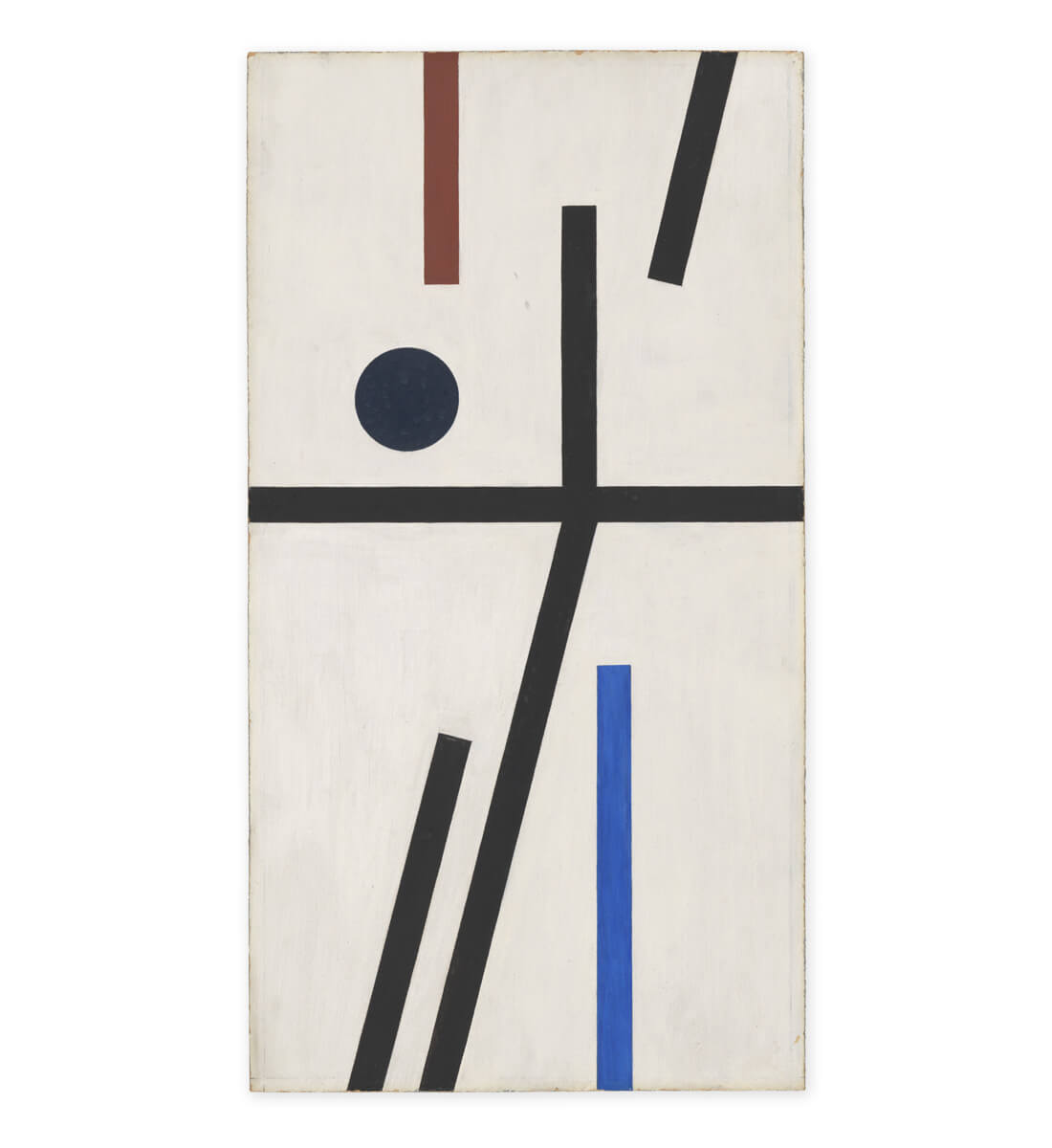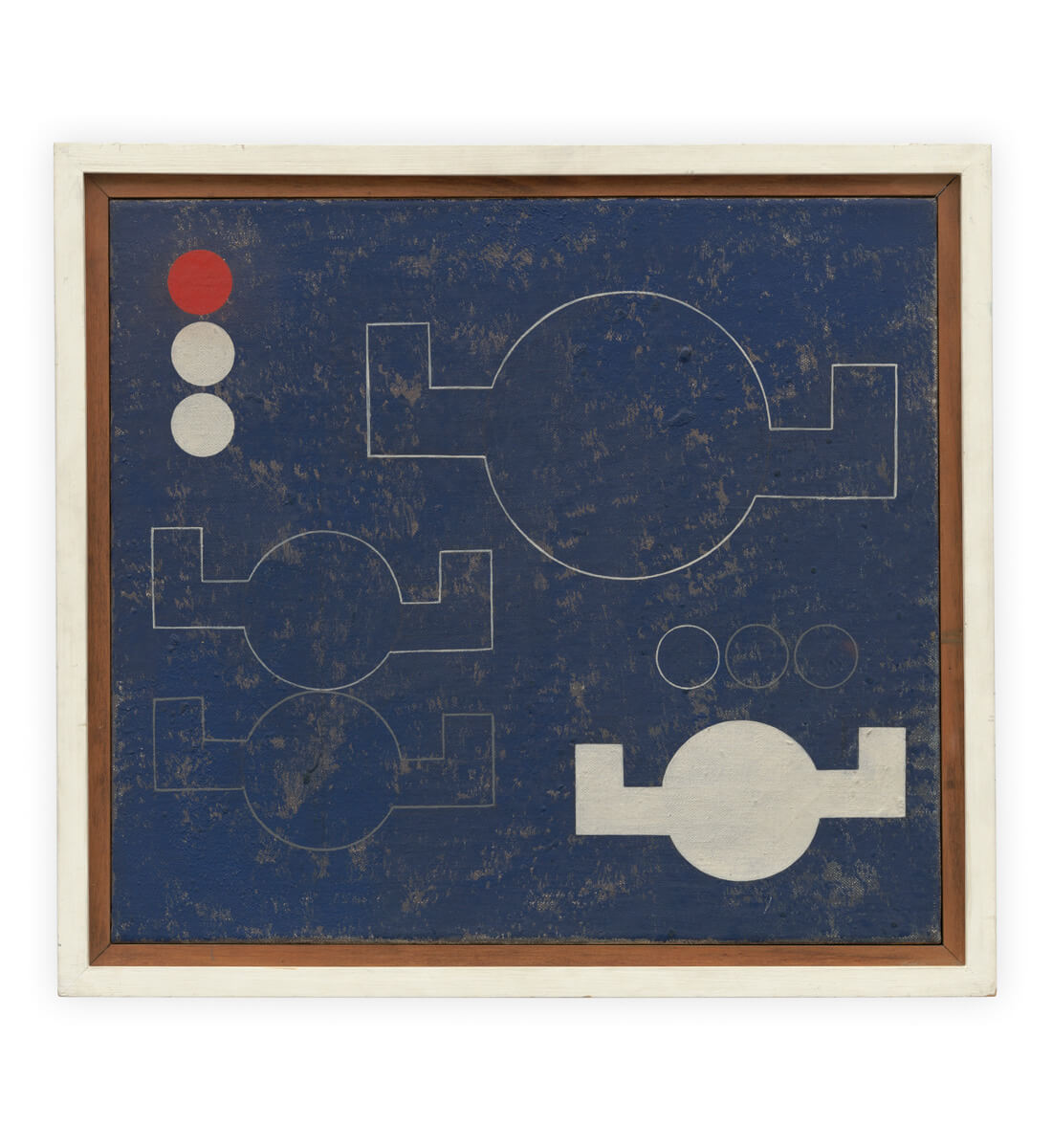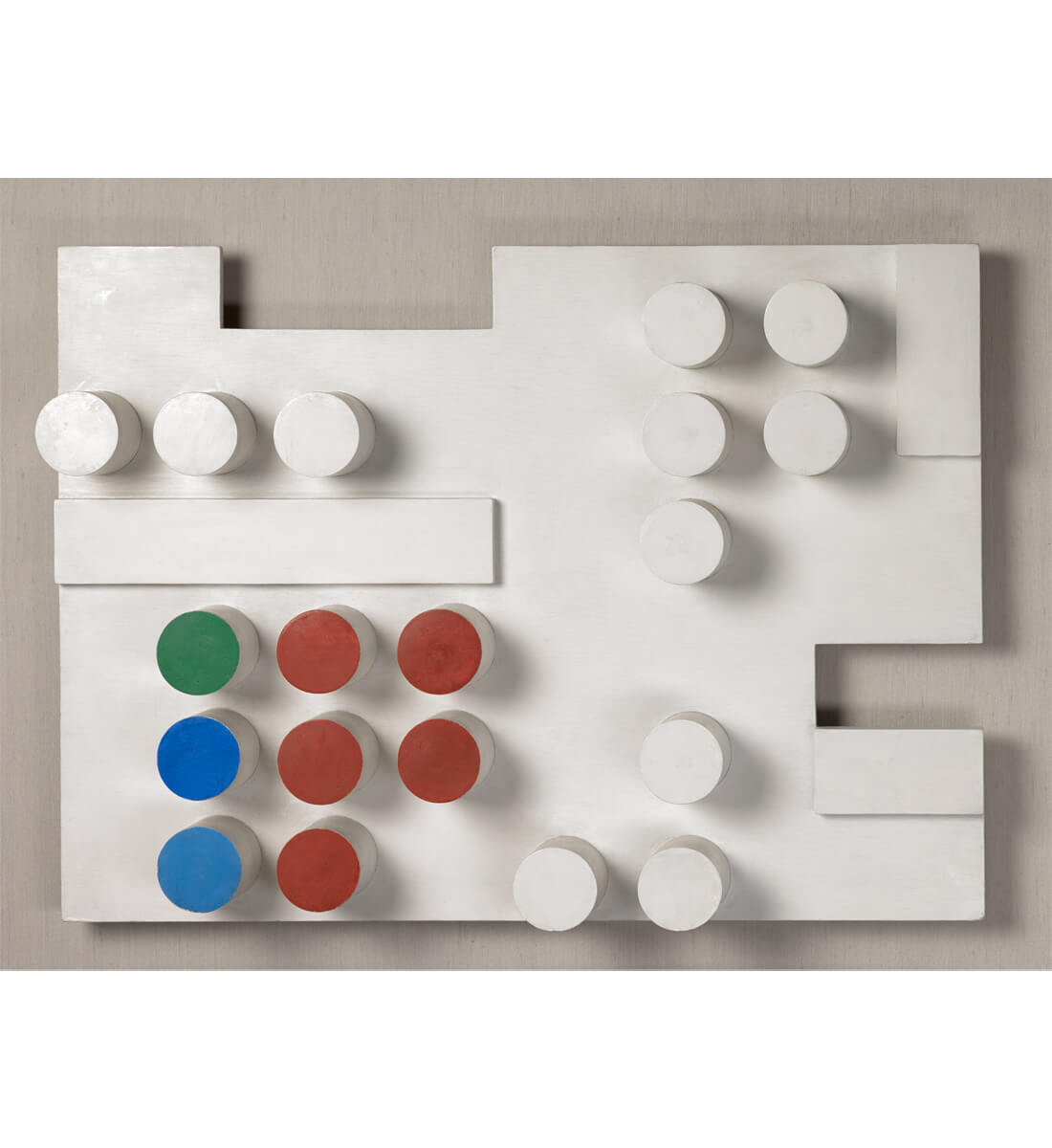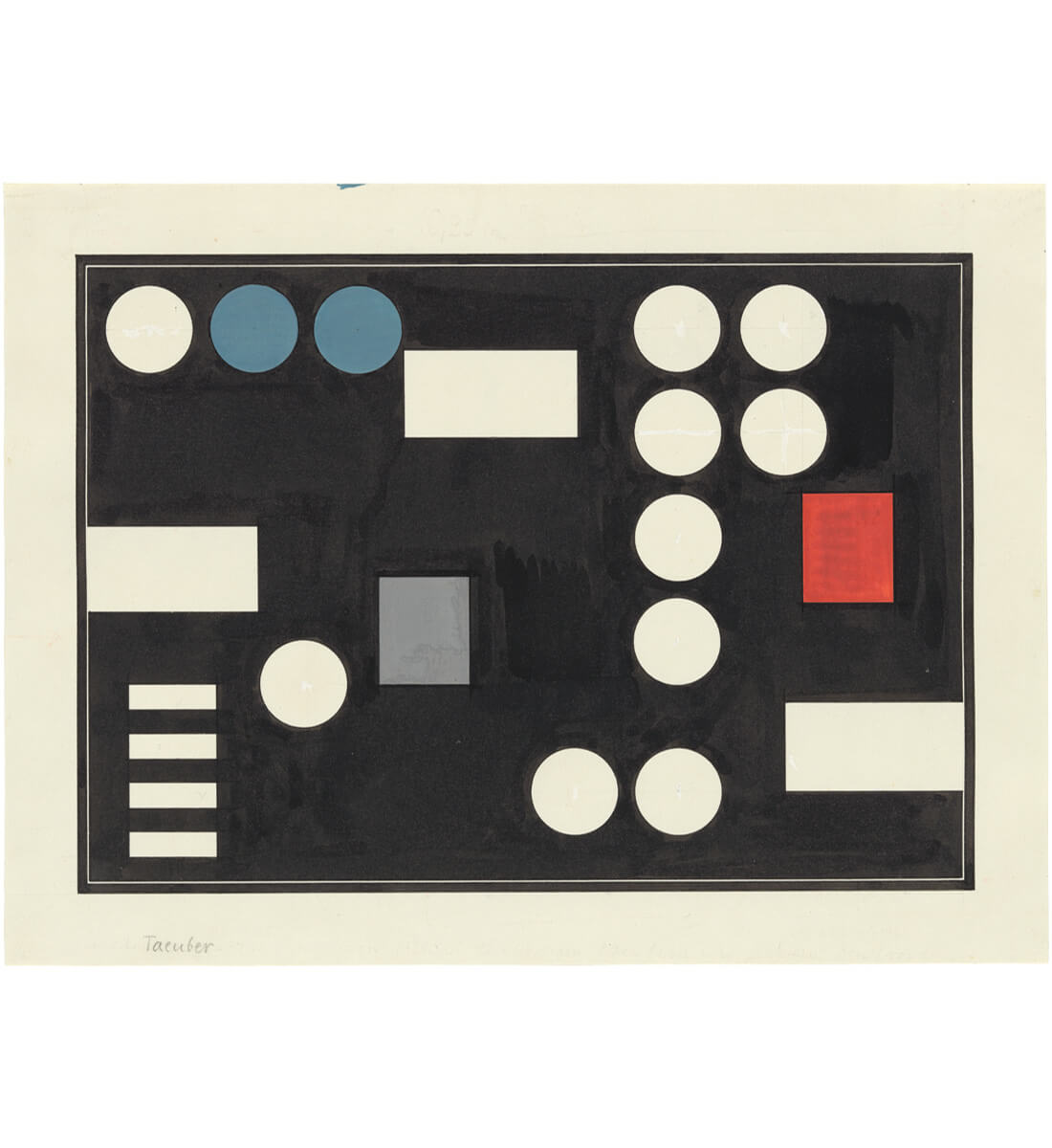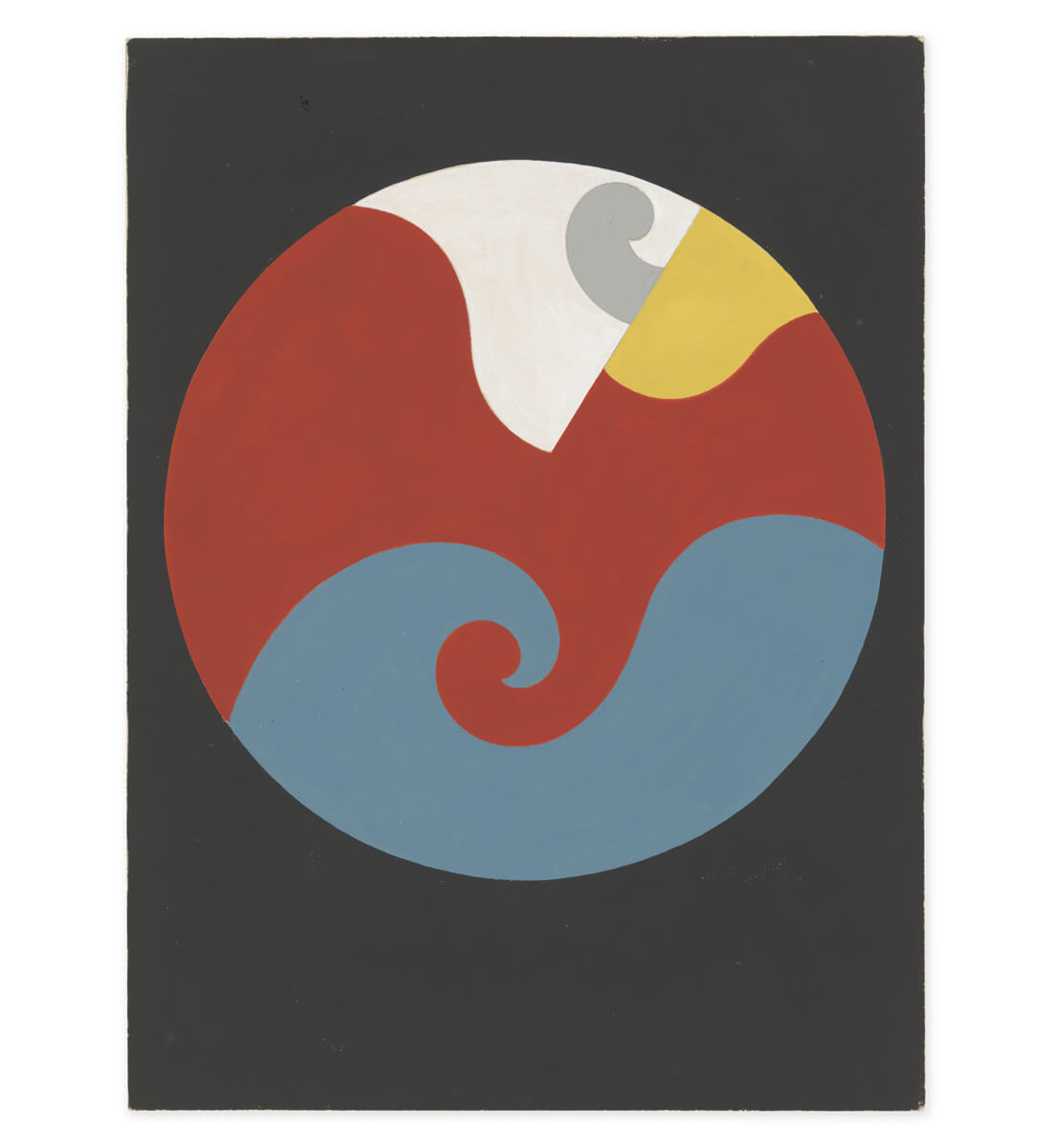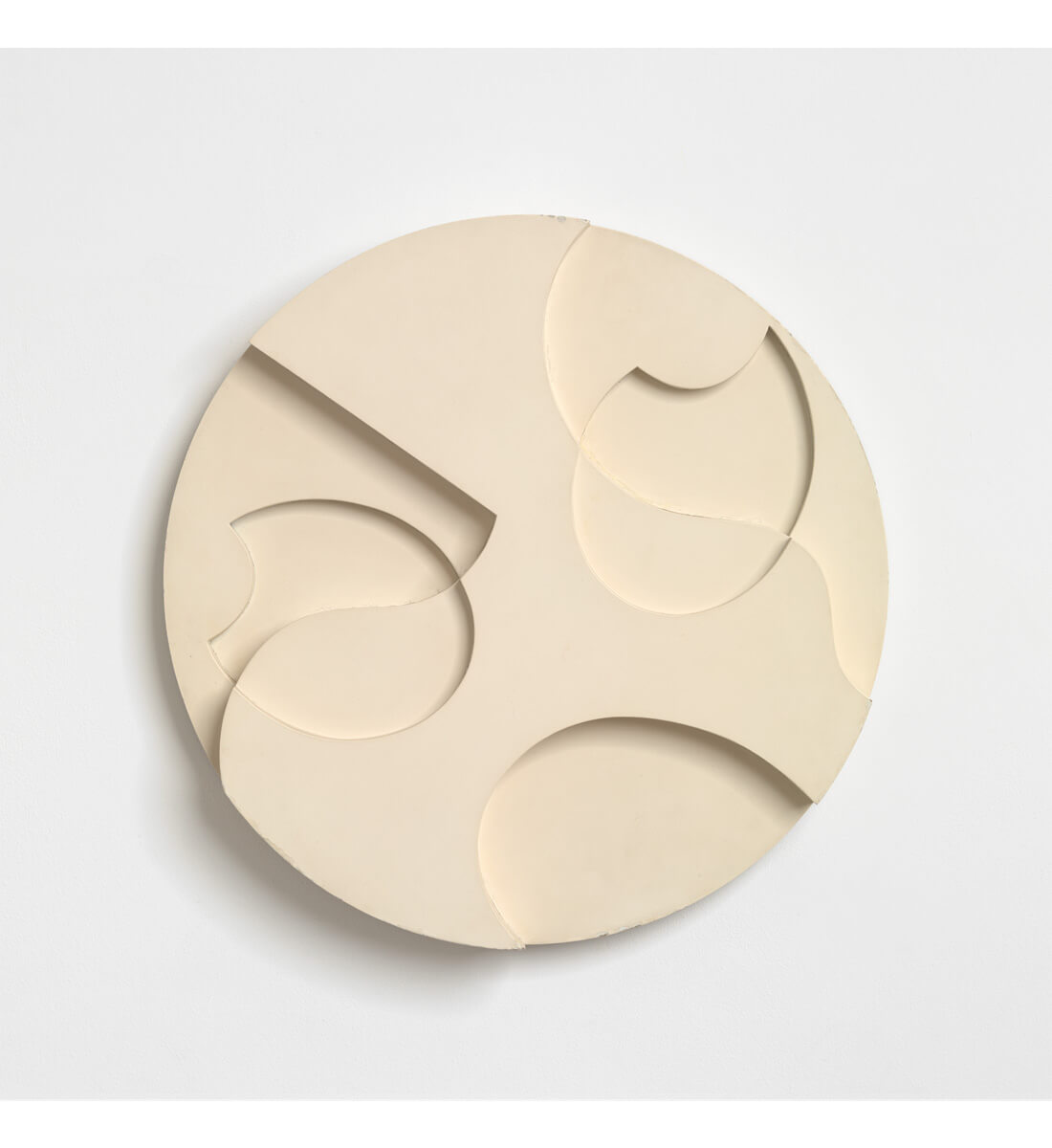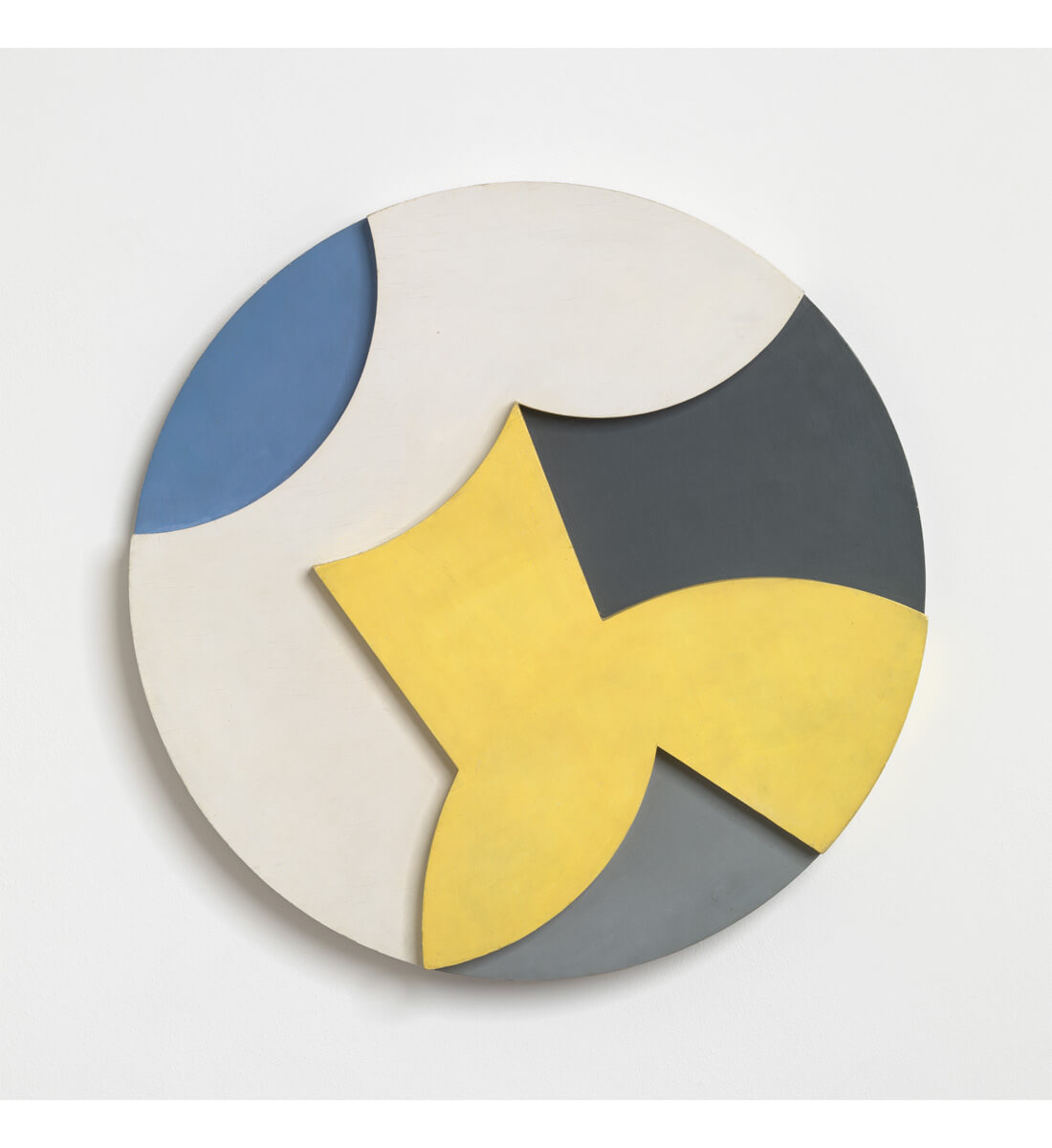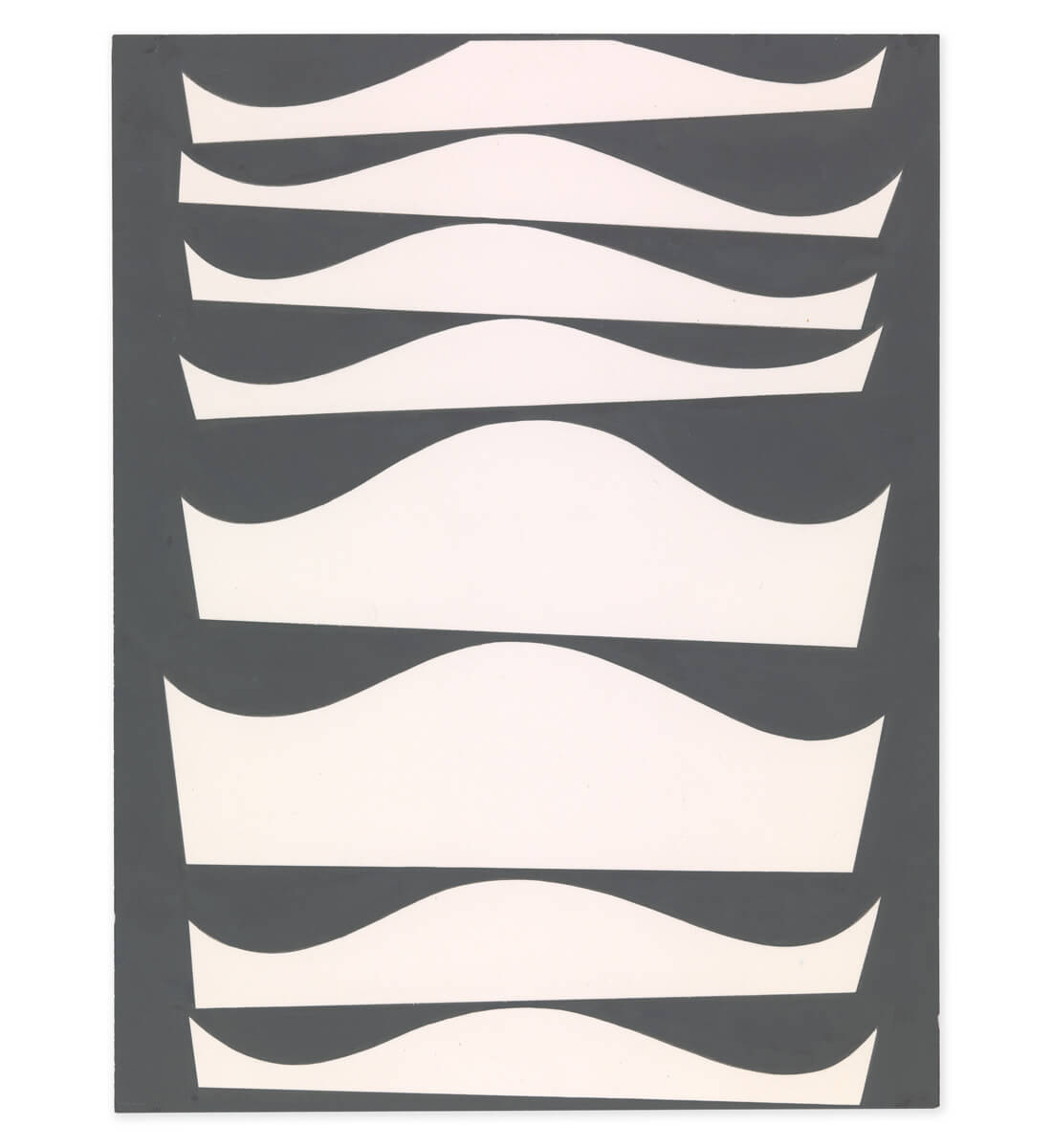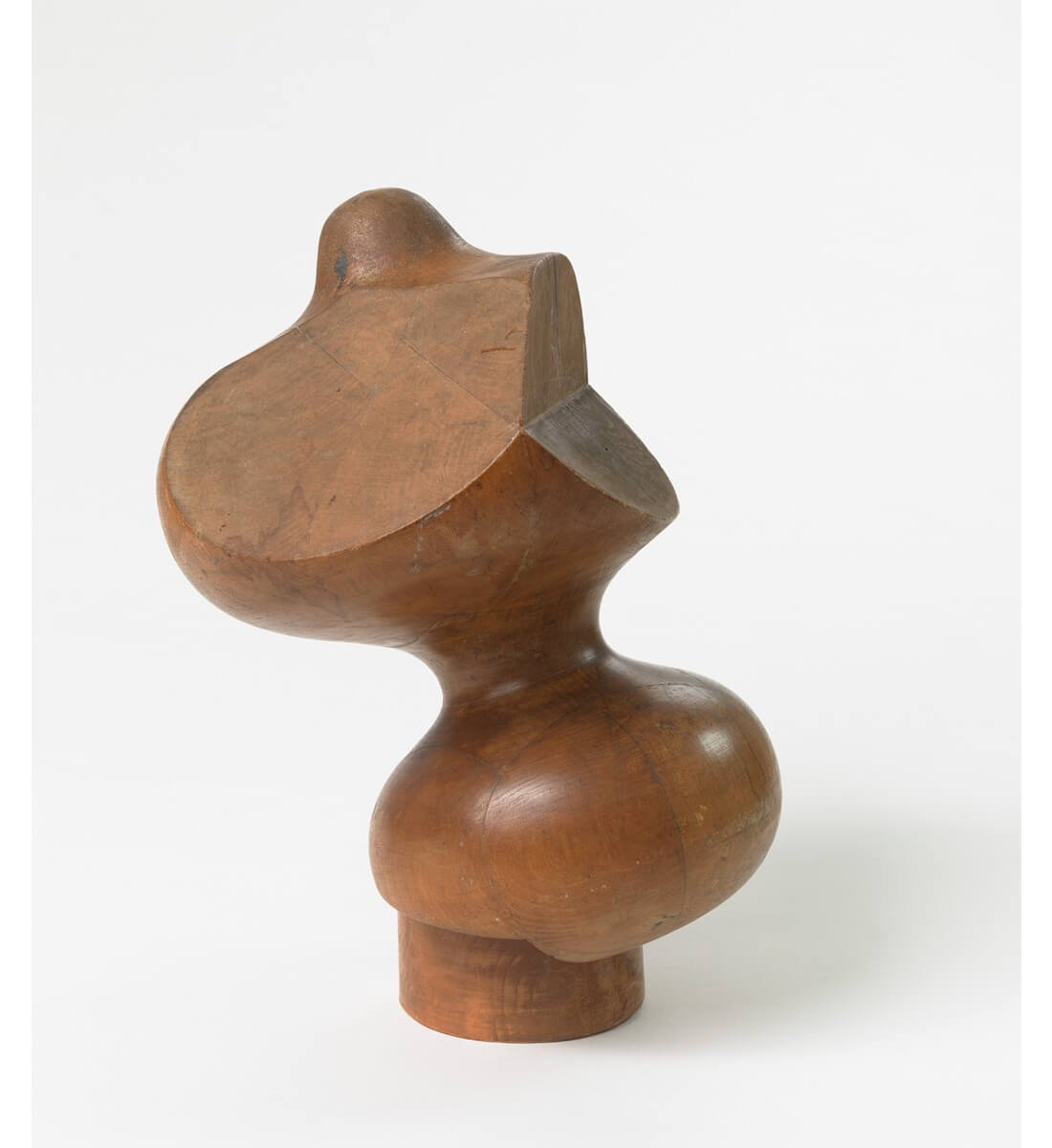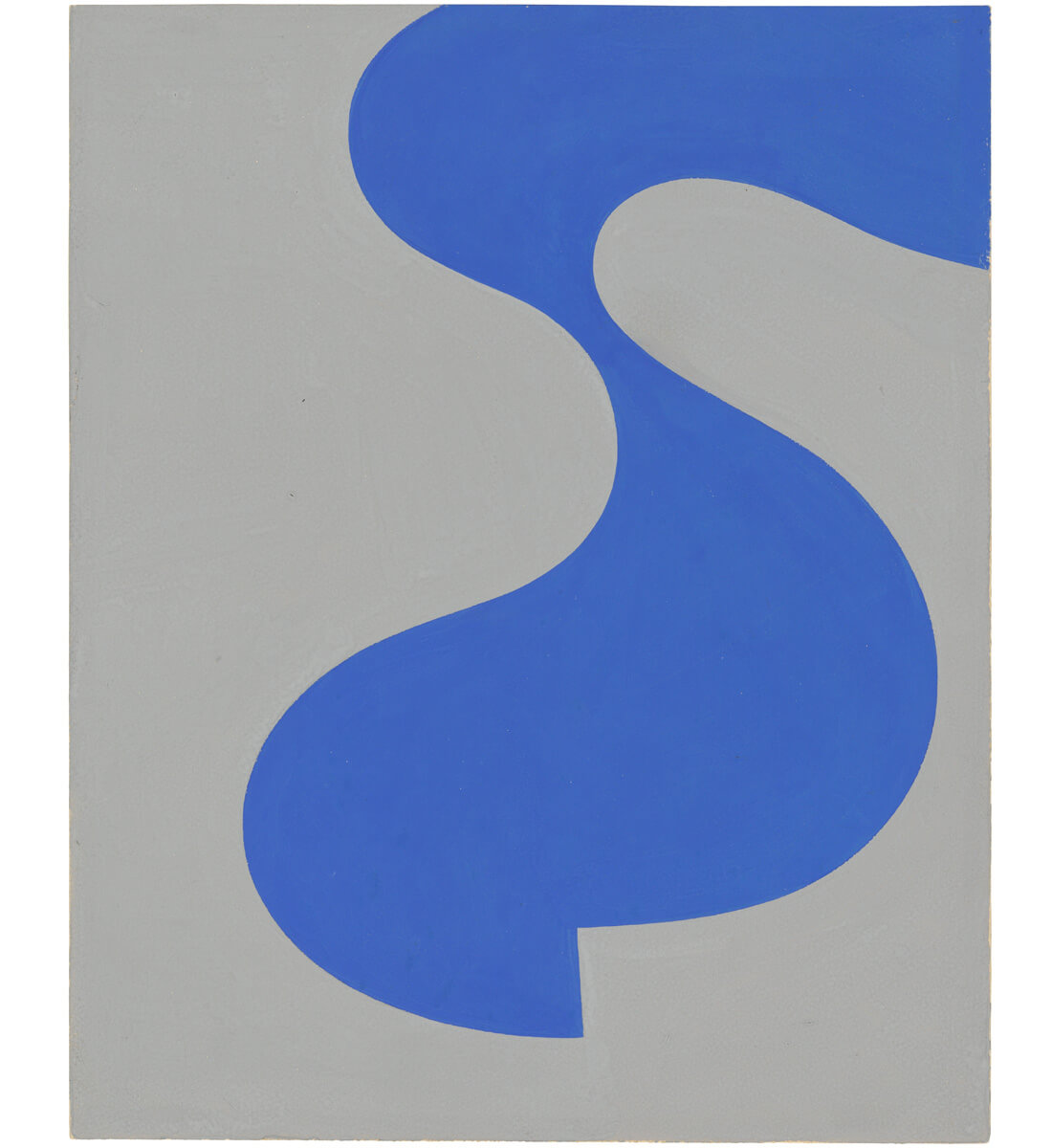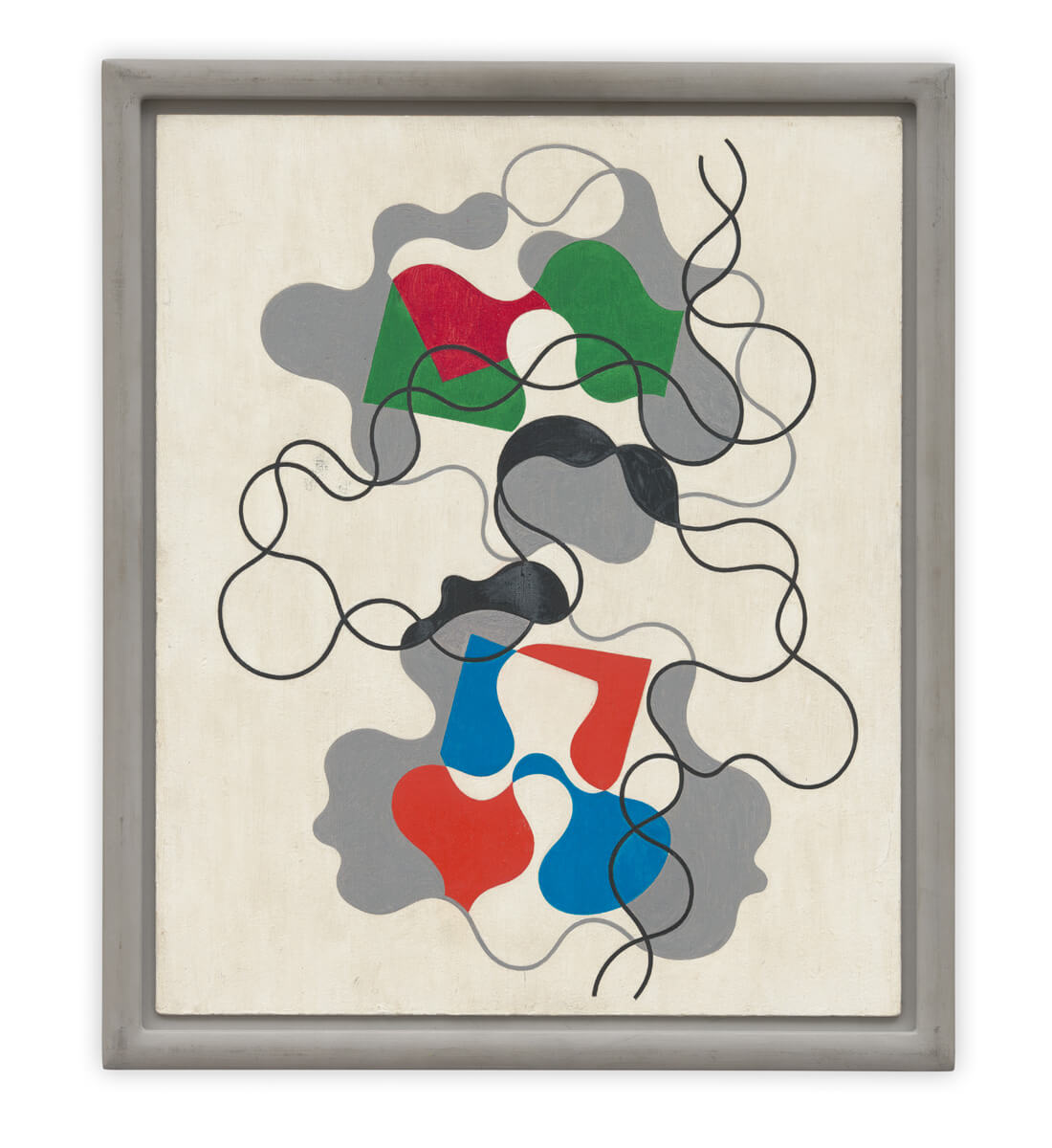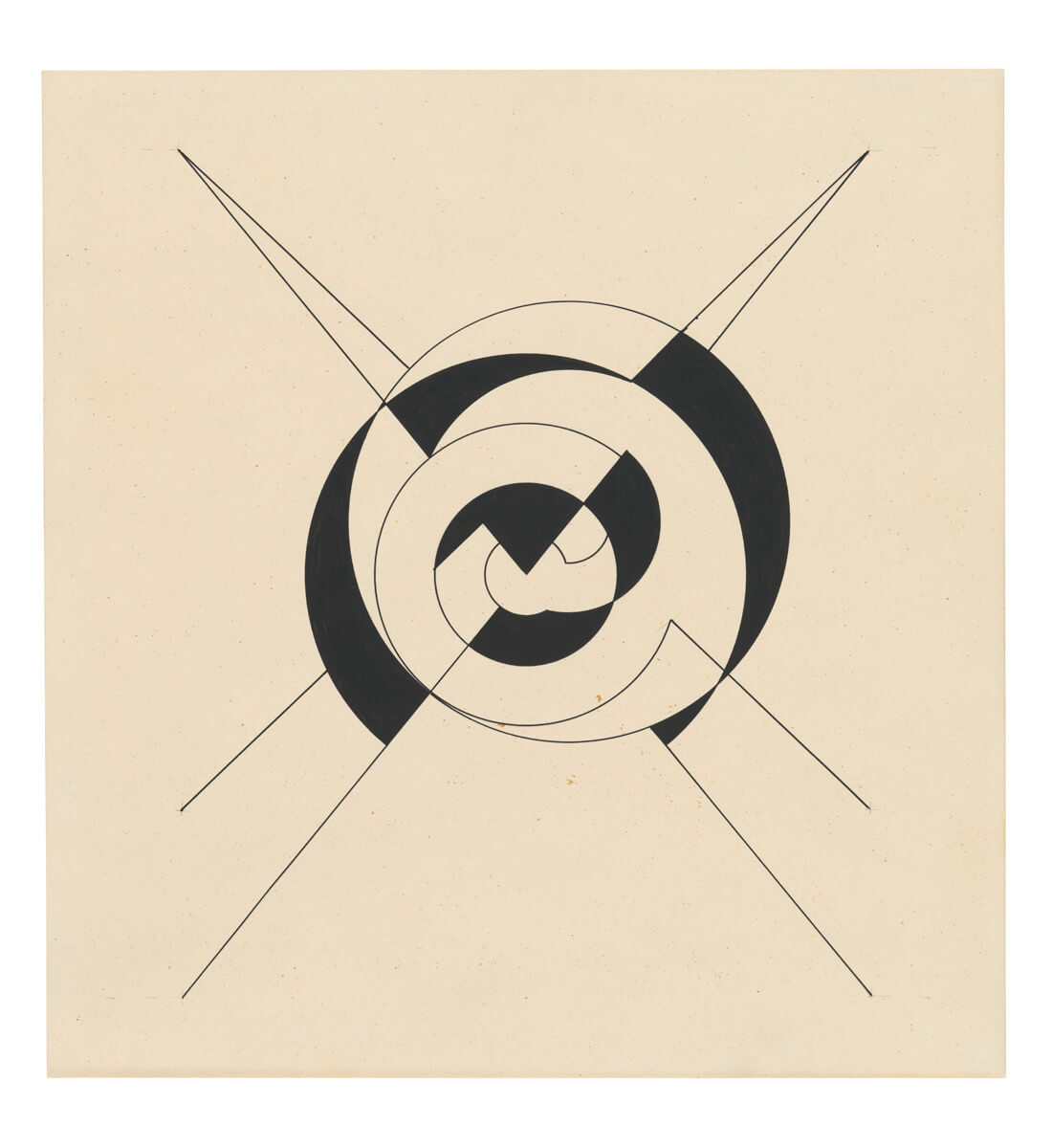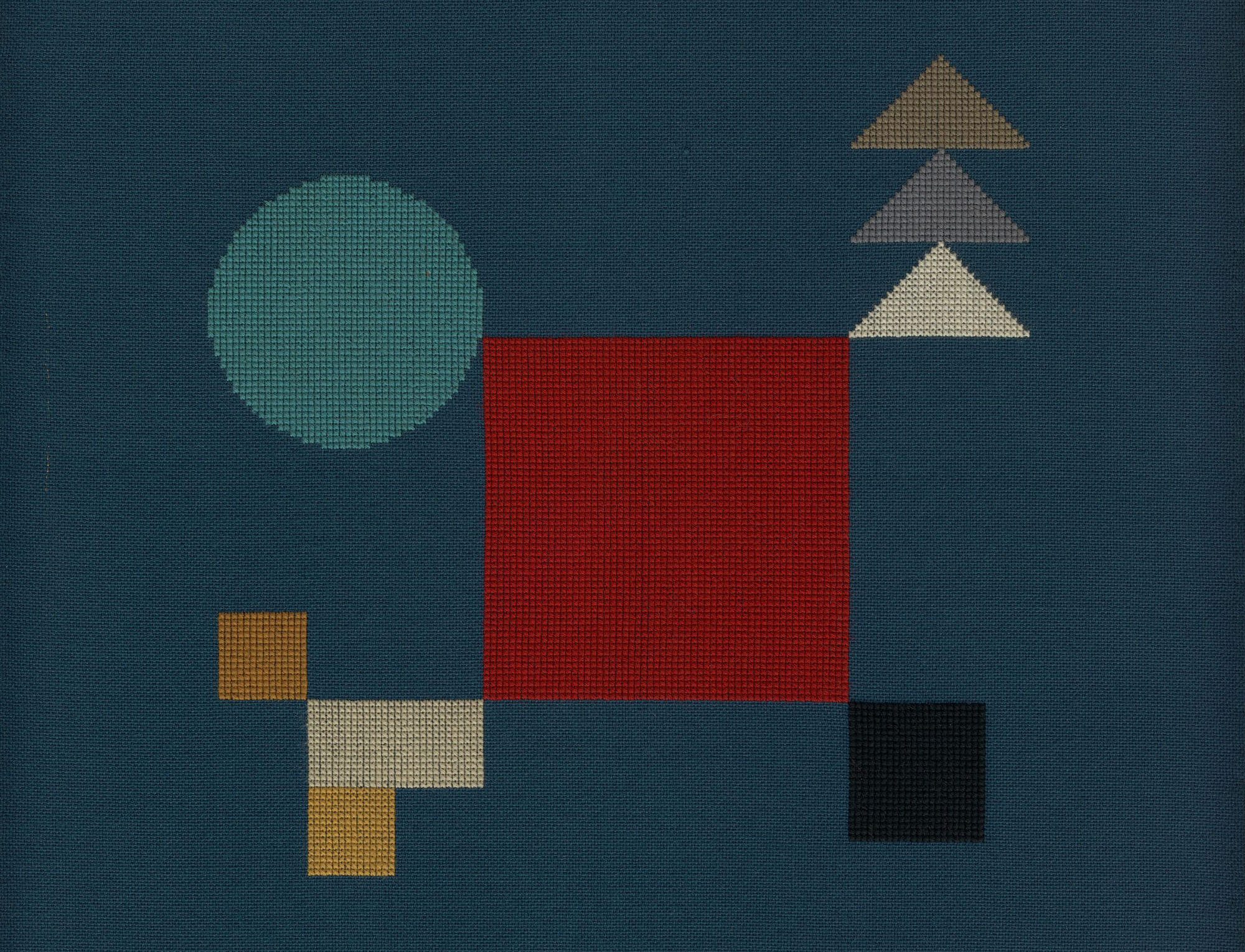
Sophie Taeuber-Arp
‘In a flower, in a beetle, every line, every form, every color has arisen from a deep necessity.’—Sophie Taeuber-Arp
Challenging conventional boundaries, Sophie Taeuber-Arp asserted art’s relevance to daily life, working across disciplines, from works on paper, painting, textiles, and sculpture, to design and architecture, as well as dance and performance. In 1915 she started to create colored pen drawings, gouaches and tapestries known as vertical-horizontal compositions. With these works she became a pioneer of constructivist art.
Photo: Sophie Taeuber-Arp with Dada Head, Zurich, 1920. Photo: Nic Aluf
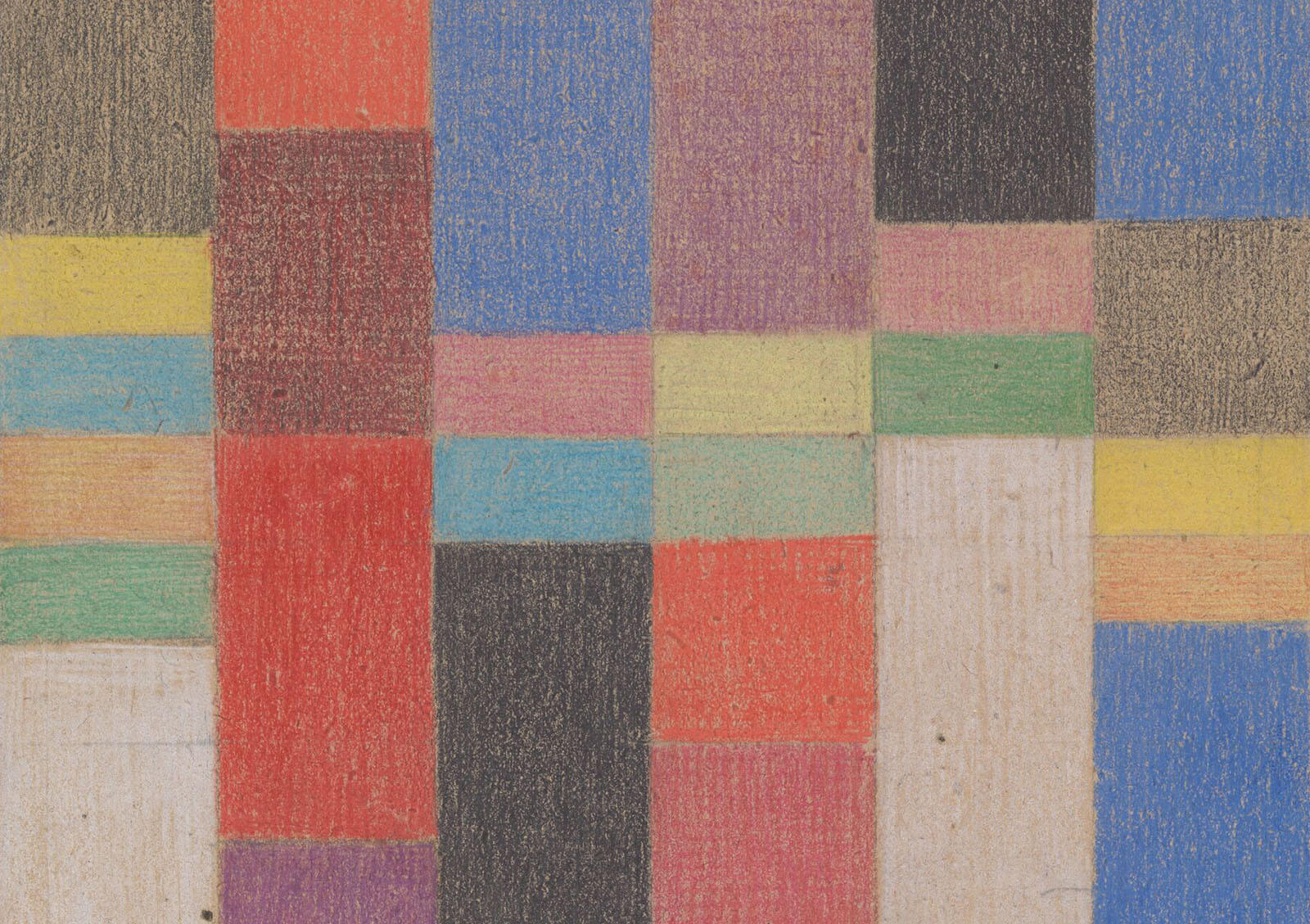
‘Like music this art is tangible inner reality. She was already dividing the surface of a watercolor into squares and rectangles which she juxtaposed horizontally and perpendicularly. She constructed her painting like a work of masonry.’—Hans Arp
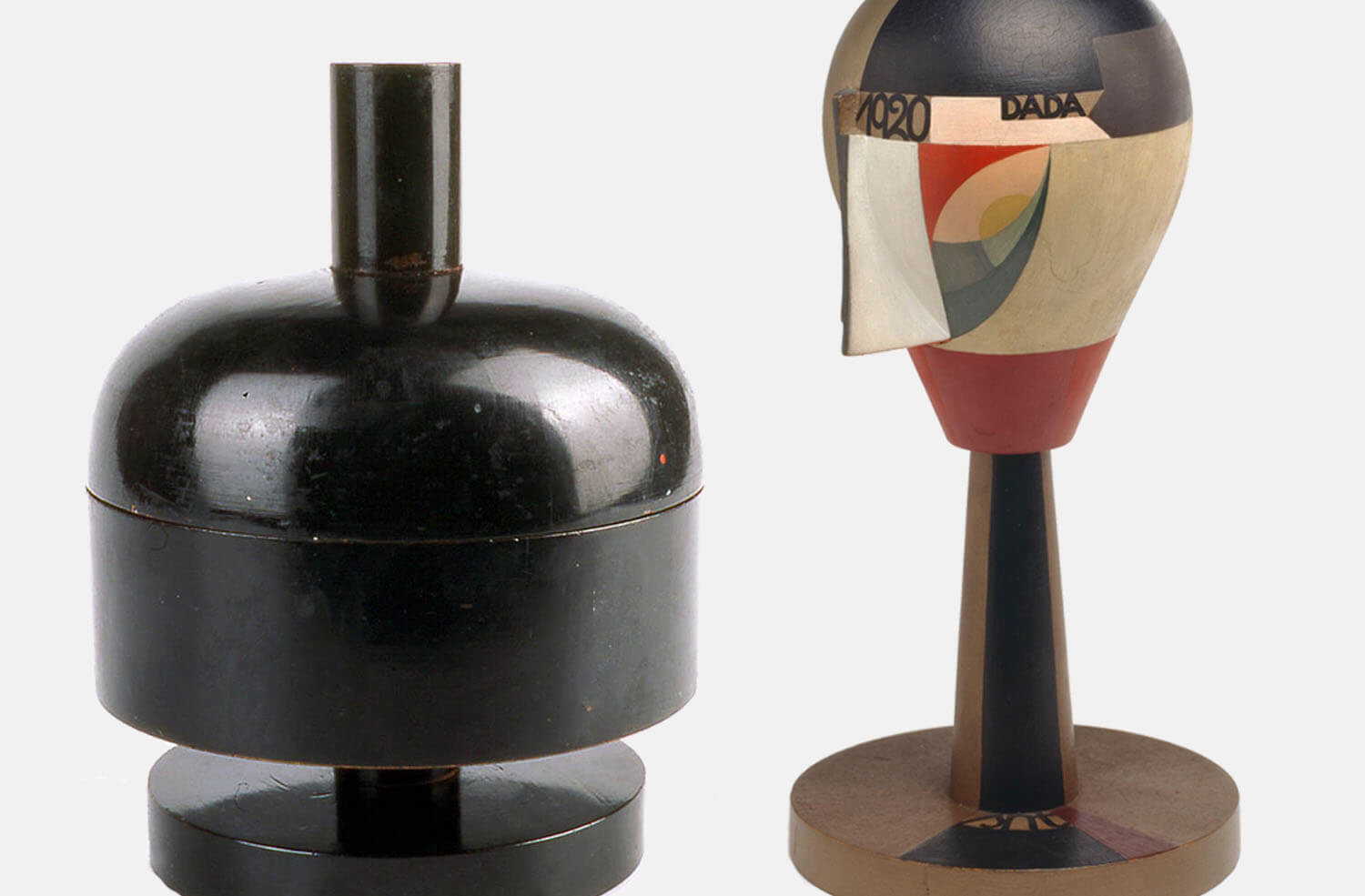
Her radical multidisciplinary approach was a constant thread throughout the distinct periods of her life and work, from her marionettes and iconic ‘Coupe Dada’ and ‘Tête Dada’ (1920), to her architectural interiors and sculptural reliefs.
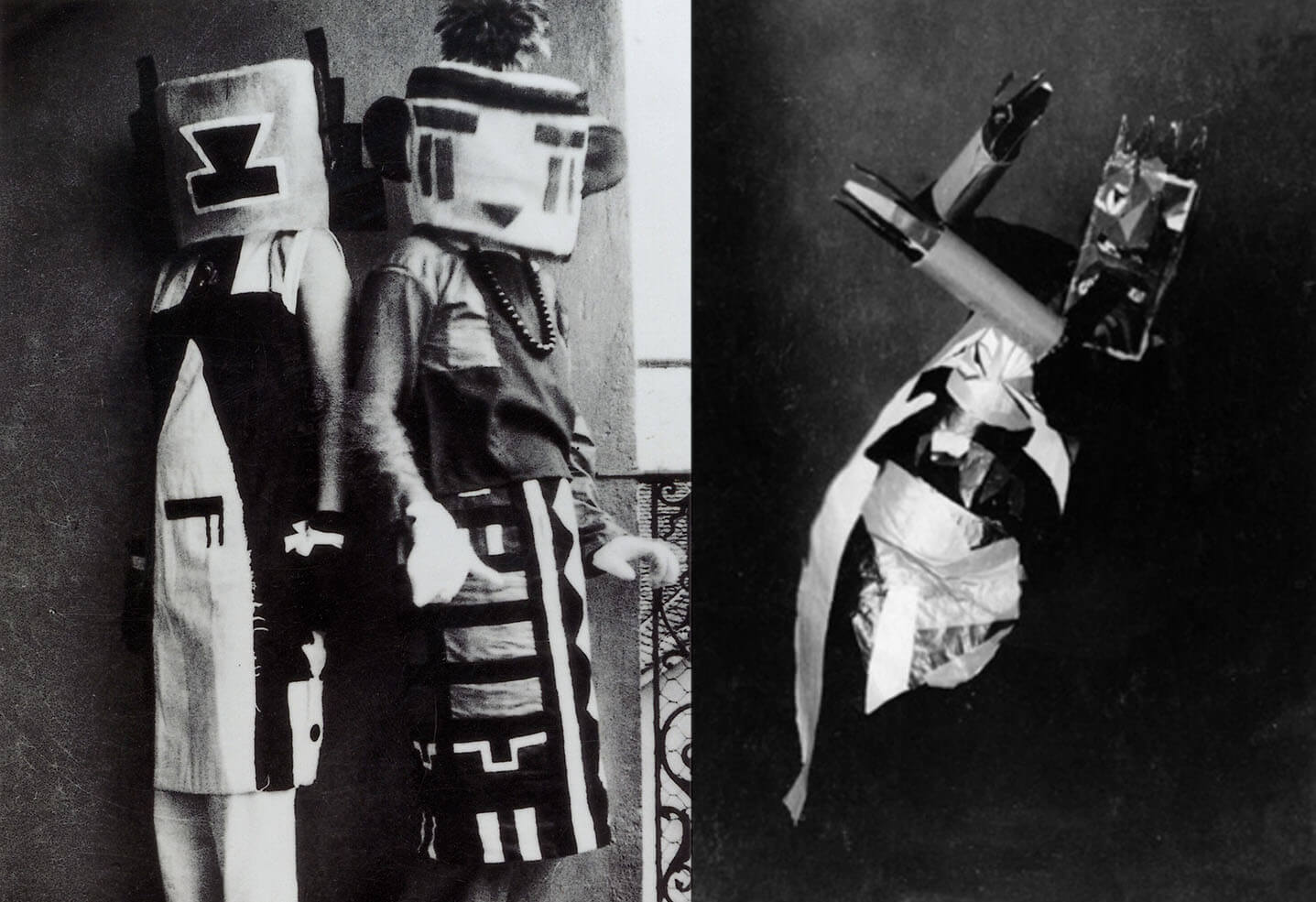
Born in Davos in Switzerland, Taeuber-Arp studied fine and applied arts in Munich before moving to Zurich in 1914 at the outbreak of World War I. During this time, she met Hans Arp, who was to become her husband and emerged as a key protagonist of the Dada movement, performing at the legendary Cabaret Voltaire. Her circle included Hugo Ball, Tristan Tzara, Marcel Janco, Richard Huelsenbeck, and Emmy Hennings.
Photo left: Sophie Taeuber-Arp and her sister, Erika Schlegel, in Hopi costumes designed by the artist, c. 1920; Photo right: Sophie Taeuber-Arp performing, wearing a mask by Marcel Janco at Galerie Dada, Zurich, March 1917.
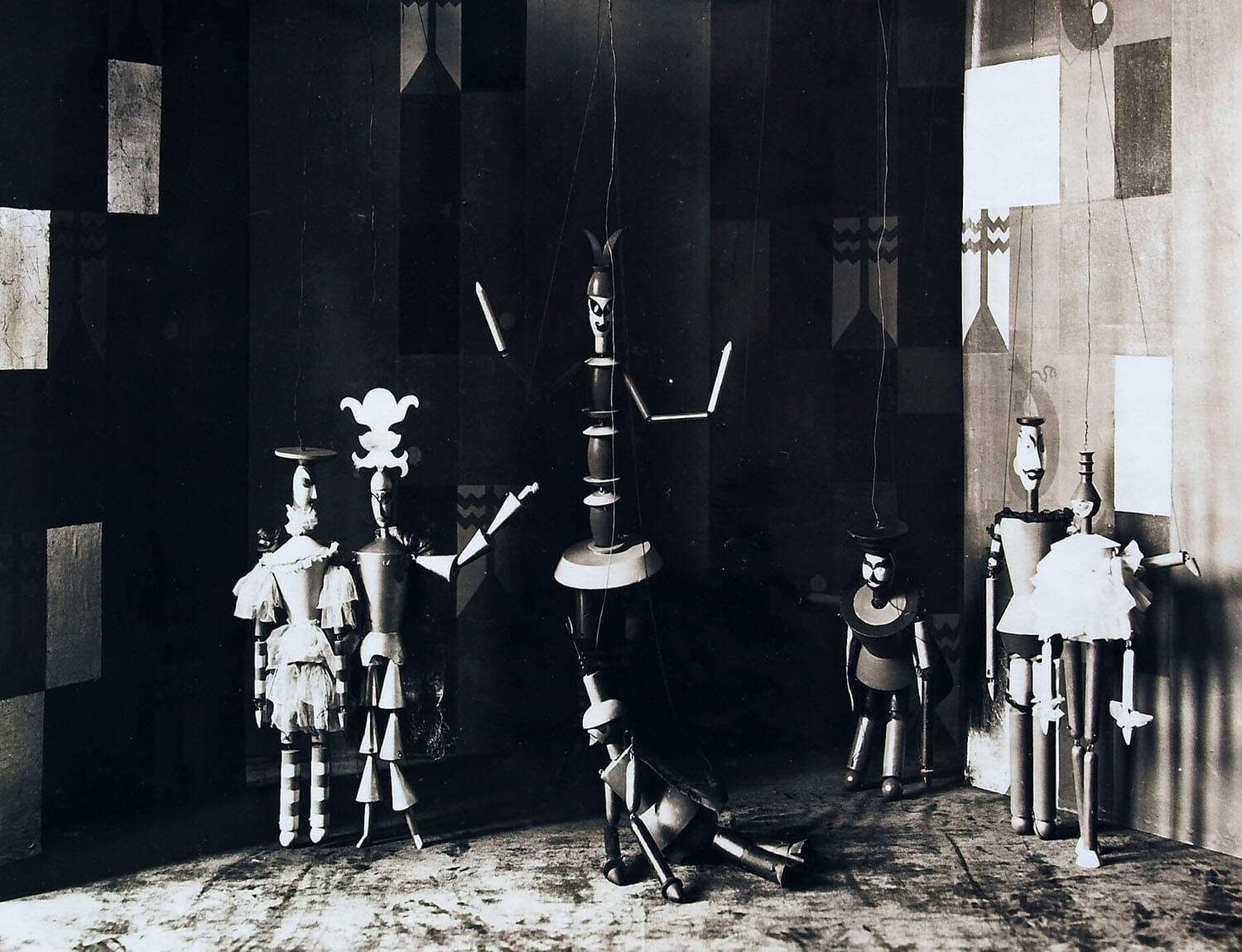
Taeuber-Arp explored new abstract forms in a ground-breaking manner that seems to be inspired by her art-and-crafts education. From 1916-1929 she taught textile design at the Zurich School of Applied Arts. In 1918 she was commissioned to design the stage sets and marionettes for a satirical version of Carlo Gozzi’s commedia dell’arte play, King Stag. Constructed using a variety of geometric-turned-wood shapes and leaving the joints visible, the avant-garde marionettes reflect Taeuber-Arp’s sensitivity for space and rhythm, and were likely inspired by her experience as a dancer.
Scene from the marionette play 'König Hirsch' (King Stag), Zurich, 1918; Photo: Ernst Linck.
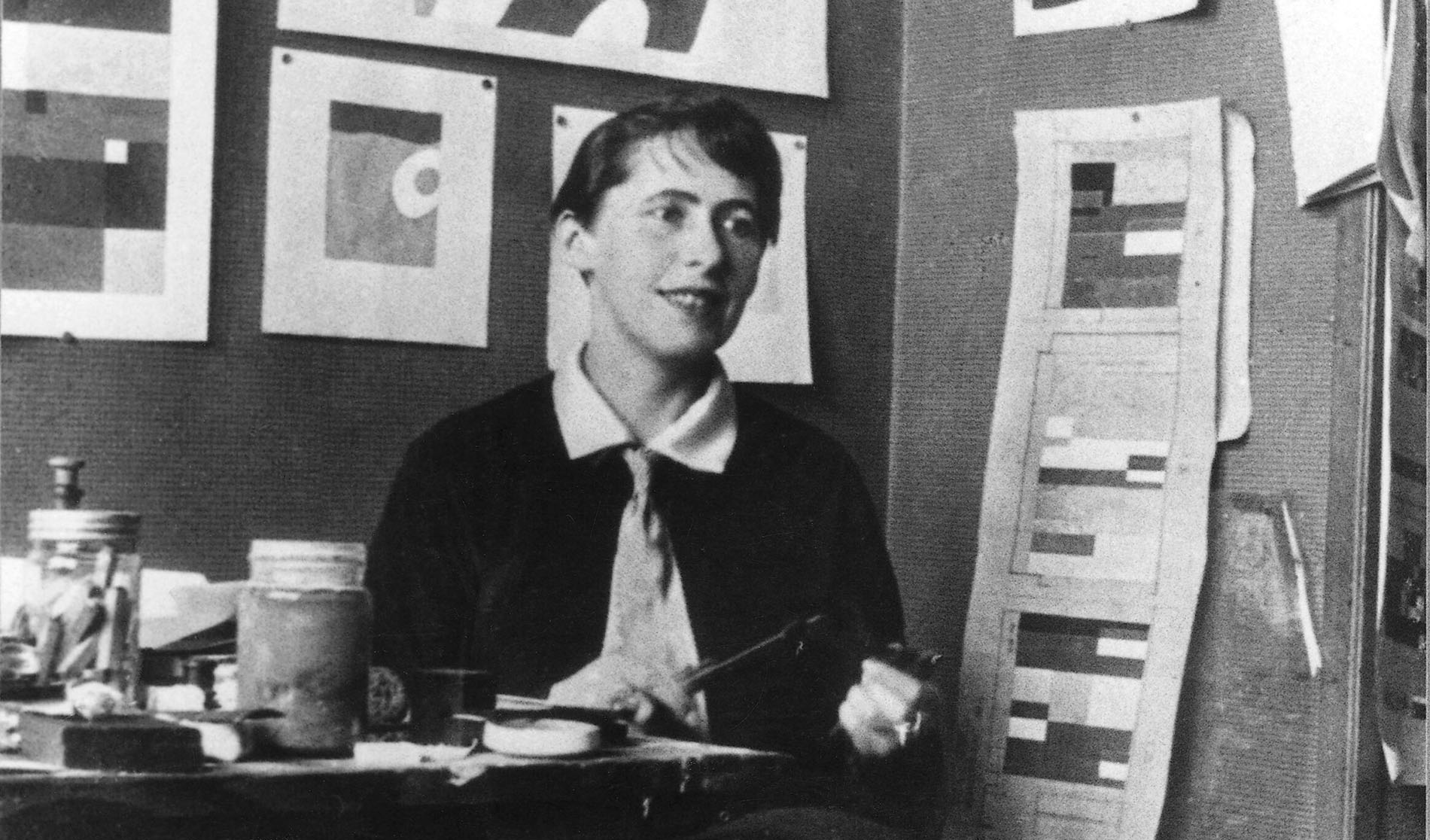
From 1926 Taeuber-Arp designed avant-garde architectural interiors for private houses and a hotel in Strasbourg. The exhibition features works surrounding her important commission for the Aubette, a cultural center located in the main square of Strasbourg, with a café, restaurant, bar, tearoom and cinema. Taeuber-Arp undertook this project in collaboration with Theo Van Doesburg and Hans Arp.
Photo: Sophie Taeuber-Arp in the project office of the Aubette in Strasbourg, 1926-27.
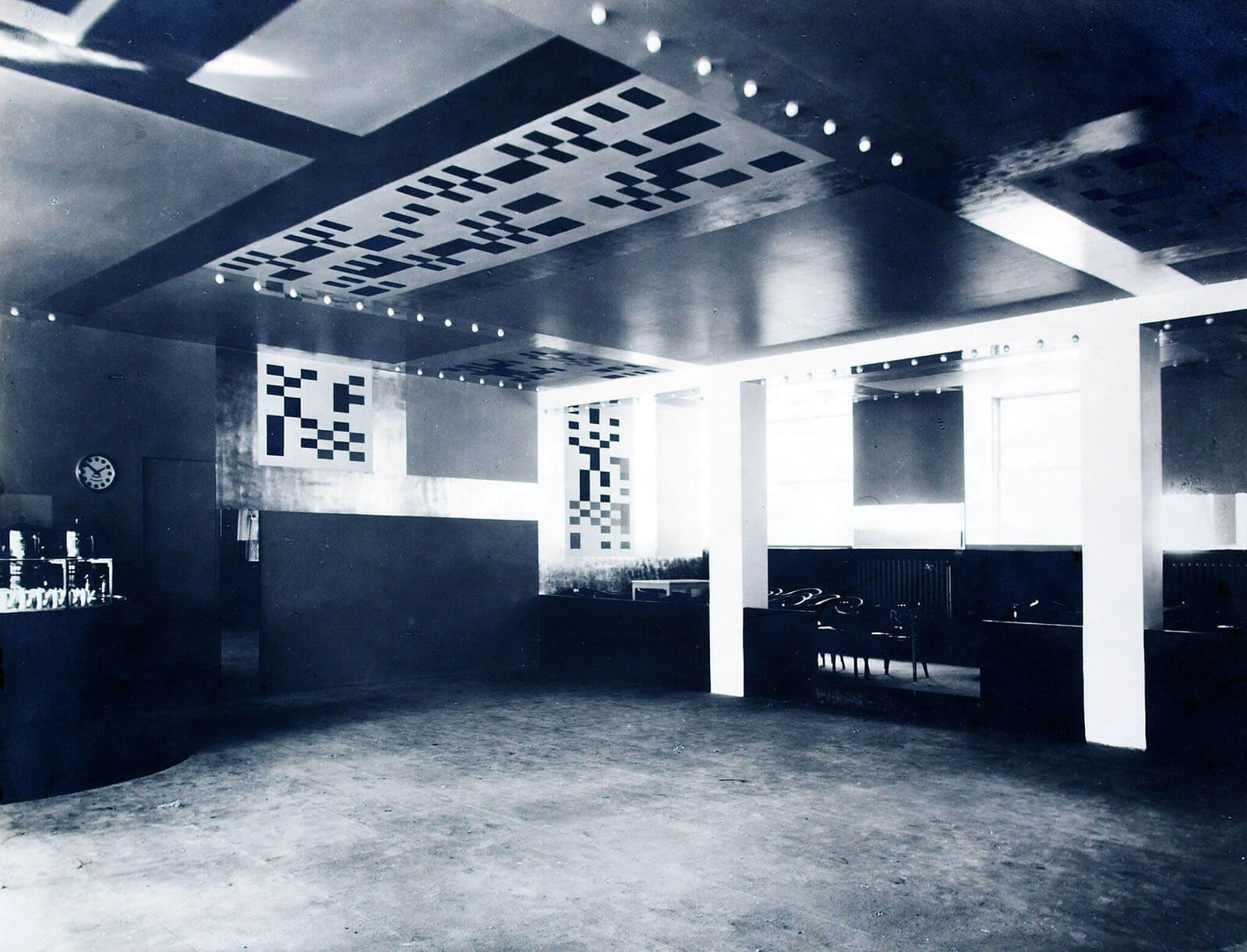
‘the walls, covered with paintings, give the illusion of almost endlessly vast rooms. Here, painting makes the visitor dream, it awakens the depths in us.’—Emmy Hennings on Sophie Taeuber-Arp’s Aubette design
Photo: Aubette, tearoom, ‘Five o’clock,’ 1928. Photo: Othon Scholl (attrib.)
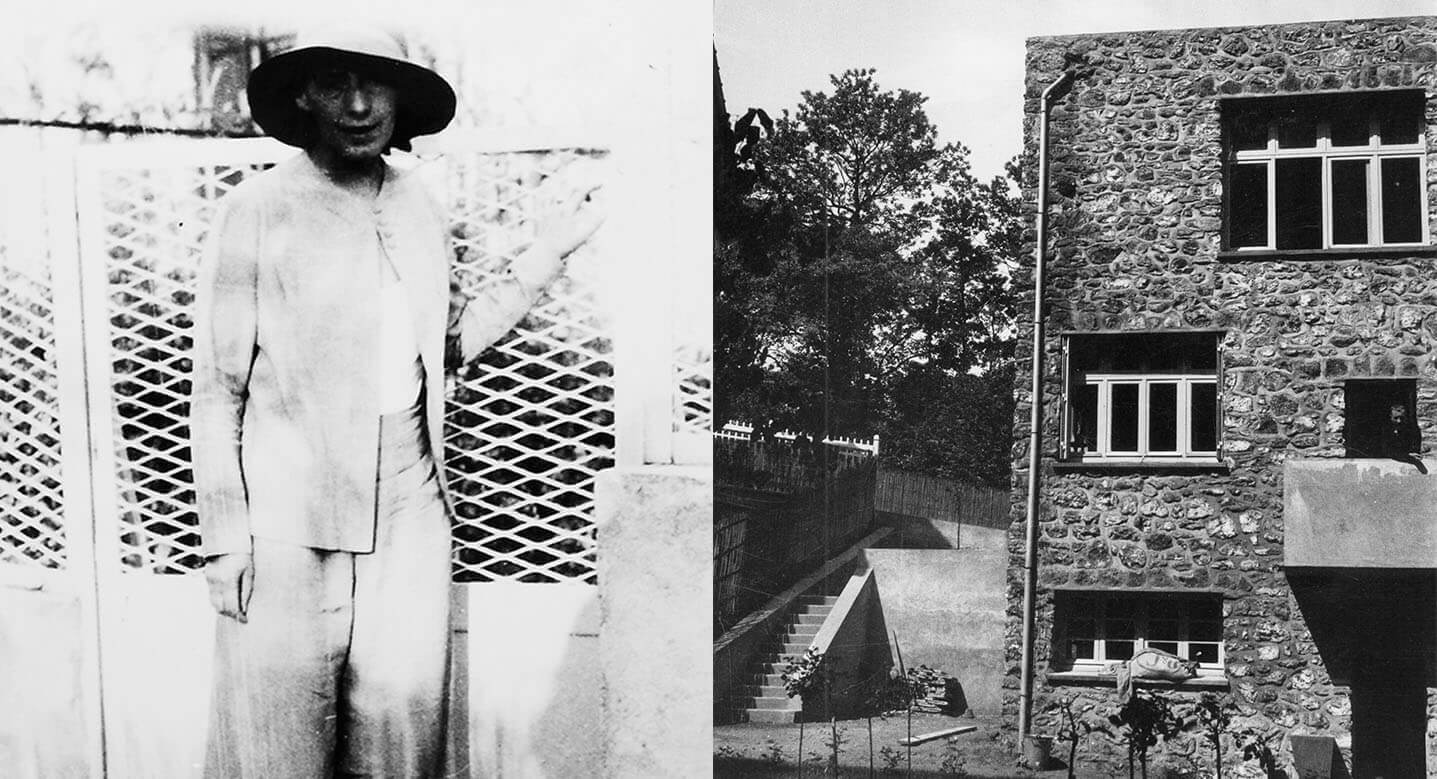
In 1928, she designed the artist couple’s home and studio in Meudon, near Paris, loosely based on the tenants of Bauhaus, and created fully modular furniture. The house became a meeting place for artists, writers and intellectuals. Their circle of friends included the artists Sonia and Robert Delaunay, Alexander Calder, Wassily Kandinsky, Joan Miró and Marcel Duchamp. Together with her husband she engaged with artistic collectives alongside fellow artists such as Georges Vantongerloo, Piet Mondrian and Max Bill.
Photo left: Sophie Taeuber-Arp, Meudon 1934; Photo right: House in Meudon, c. 1928.
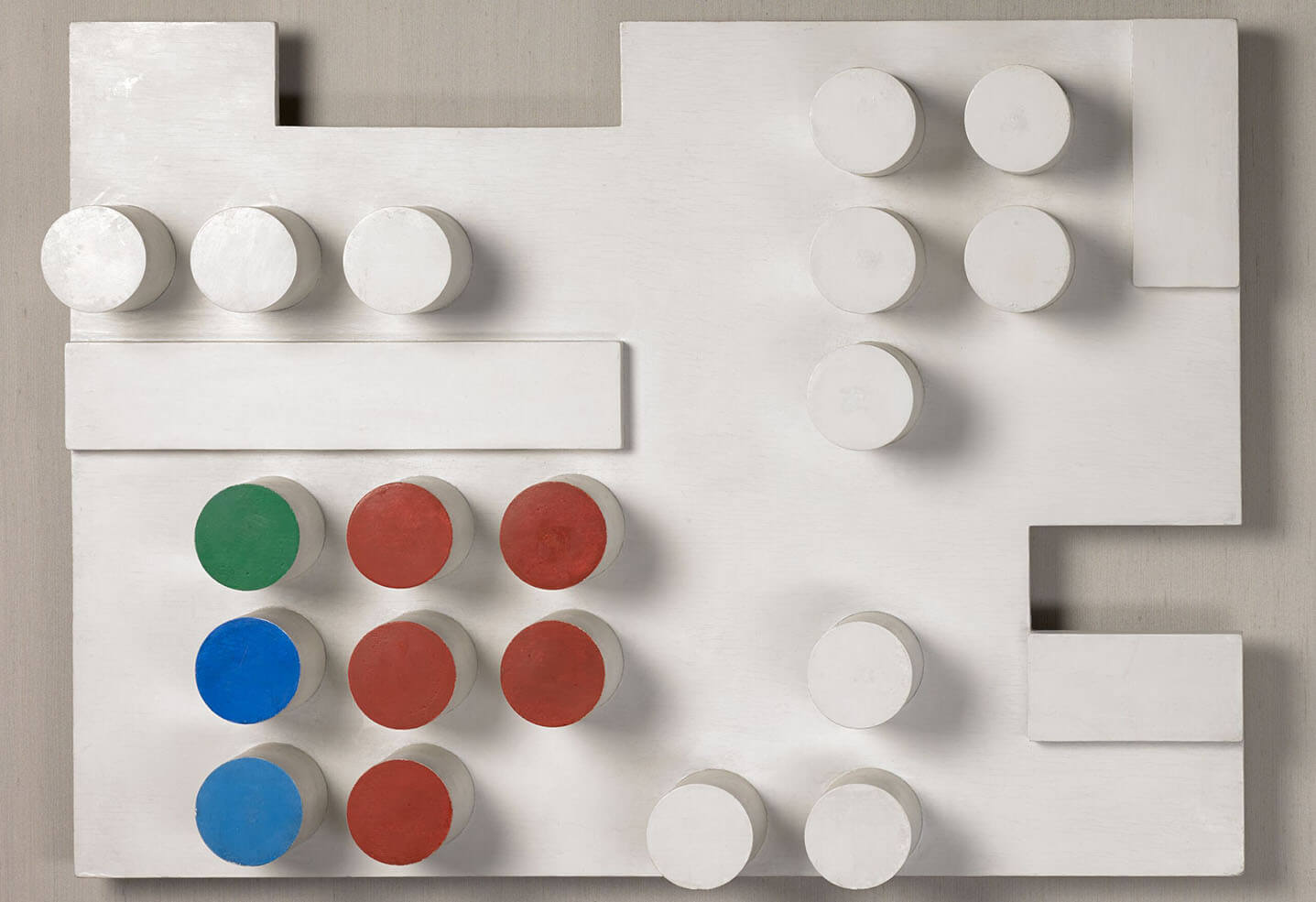
‘An order within a group of the simplest, uniform entities: within dots of different colors, groups in different compositions. But it is not only the groups...it is also the space that they fill, their proximity to one another and their distance, it is the pure, clear space, in which the episode unfolds.’ —Max Bill
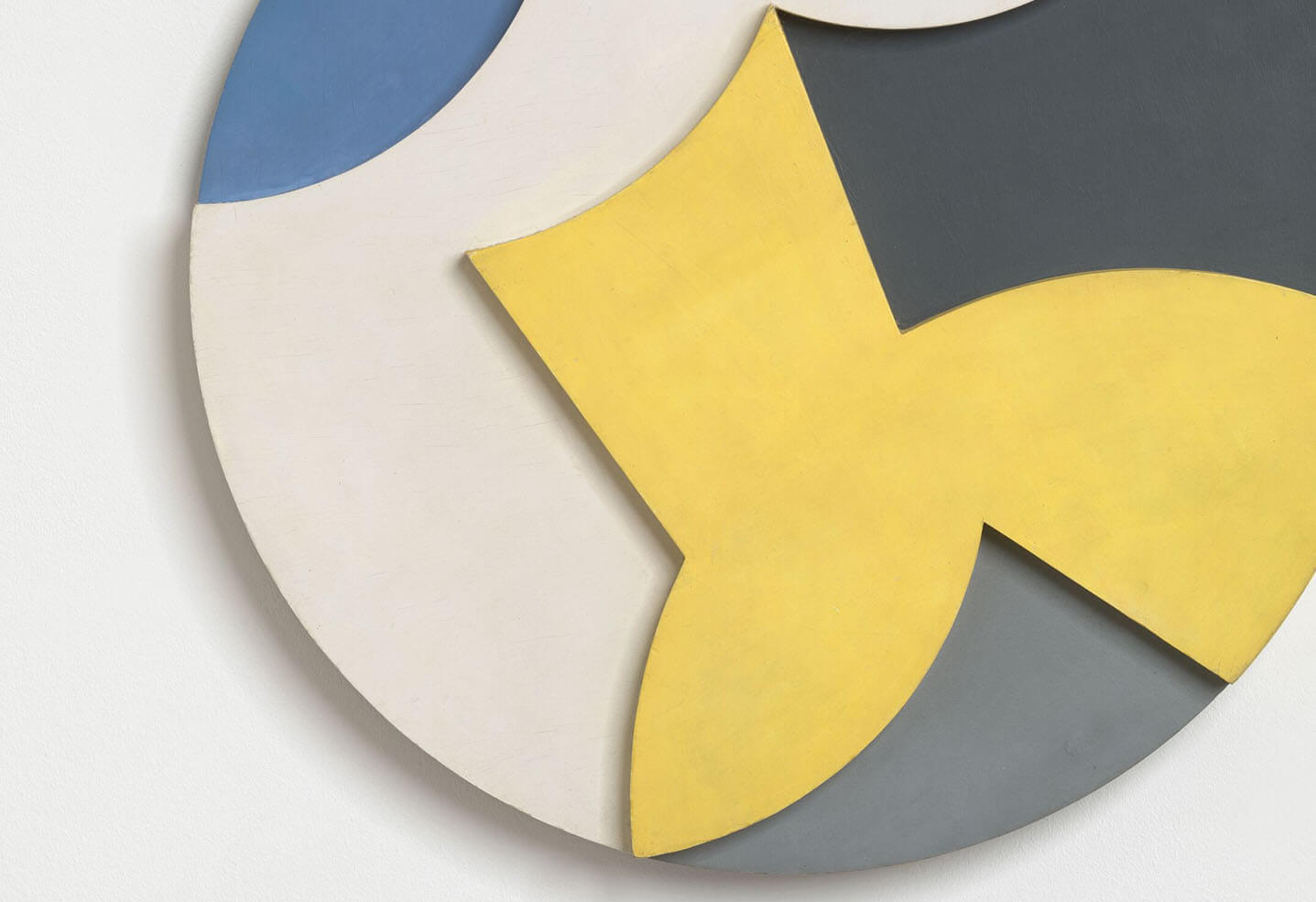
‘Sophie Taeuber-Arp expressed herself by means of the 'colored relief', especially in the last years of her life, using almost exclusively the simplest forms, geometric forms.’—Wassily Kandinsky
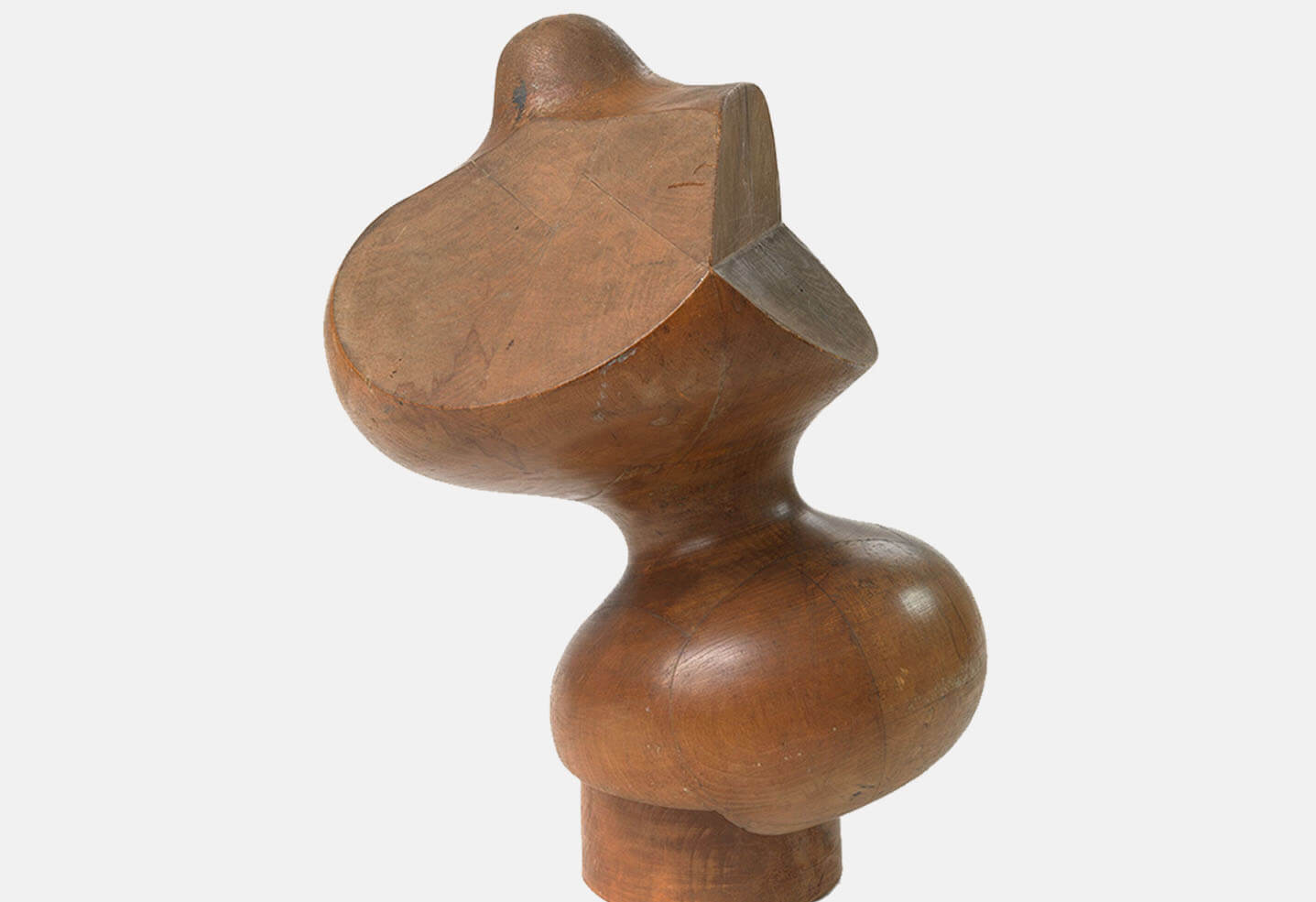
The ‘Marital Sculpture’ belongs to a small group of works that Taeuber-Arp created together with her husband. It displays the couples joint interest in balance and forms with its cut-away wedge shapes and rounded edges. The curves of the sculpture are reminiscent of Hans Arp’s biomorphic language and its material translation into wood can be seen as a continuation of Taeuber-Arp’s earlier sculptures from the Dada period.
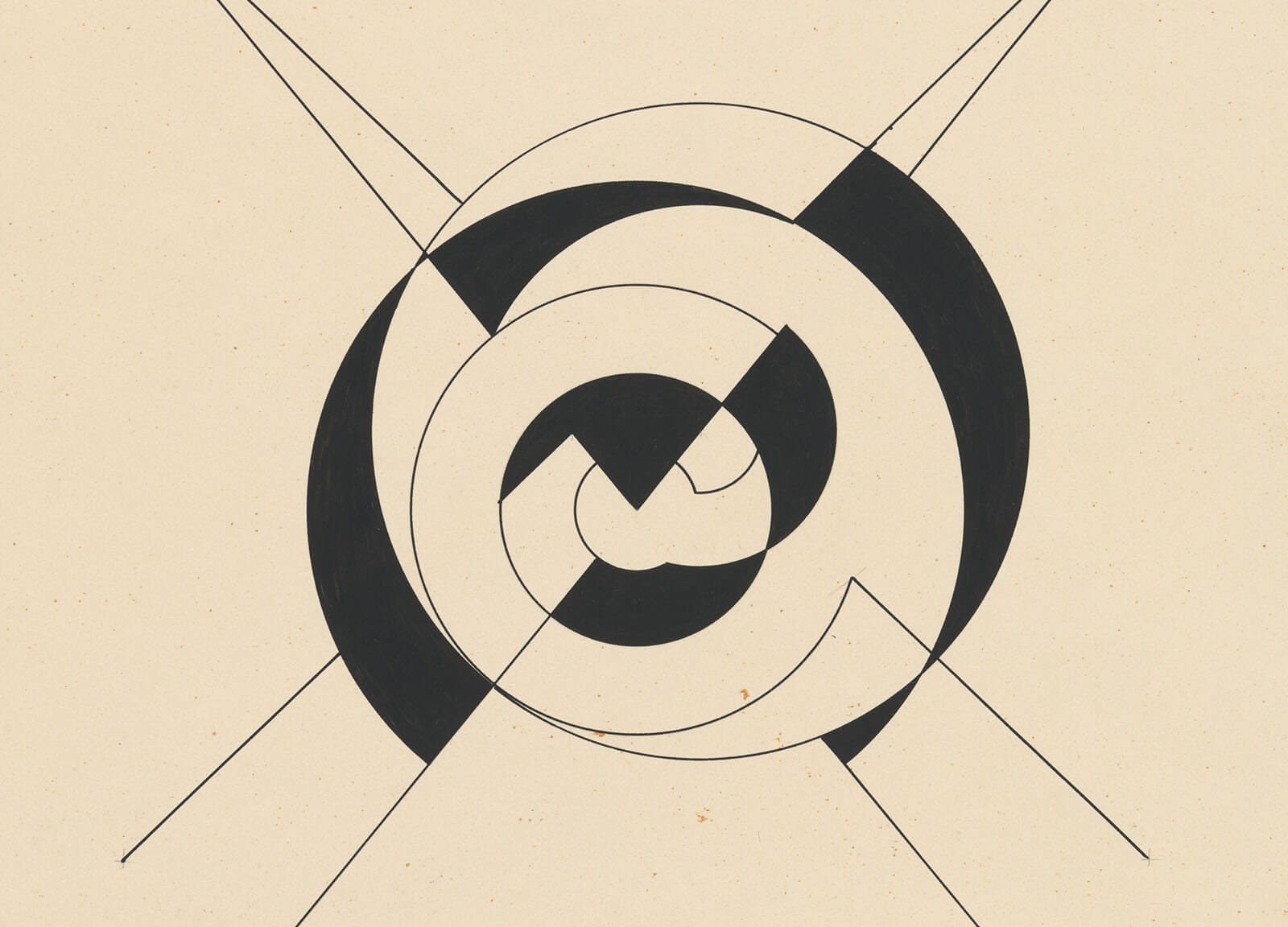
When Taeuber-Arp and Arp fled from Paris to Grasse in 1940 and then later crossing over to Zurich in 1942, her works became concentrated on the medium of drawing and exploration of the line, seen in works such as ‘Lignes d’été (Lines of Summer)’ (1942) which features in the exhibition. Sophie Taeuber Arp’s last works, a series of pencil and ink drawings on paper called ‘Construction géométrique (Geometric Construction)’, were created only three weeks before her accidental death in January 1943. Rapidly drawn lines and circles resemble a sun, its rays seeming to take up every corner of the surface.
Inquire to learn more about works by Sophie Taeuber-Arp
Sophie Taeuber-Arp will be the subject of a major retrospective exhibition co-organized by The Museum of Modern Art, Kunstmuseum Basel, and Tate Modern. ‘Sophie Taeuber-Arp: Living Abstraction’ opens in March 2021 at Kunstmuseum Basel in Taeuber-Arp’s native Switzerland, and will subsequently be presented at Tate Modern in London, where it will be the first-ever survey of the artist’s work in the United Kingdom, and at MoMA in New York, the artist’s first major US exhibition in nearly 40 years.
–
Supporting COVID-19 Solidarity Response Fund for the World Health Organization
Under the umbrella of Hauser & Wirth’s new global philanthropic and charitable initiative #artforbetter, we are donating 10% of gross profits from sales of all works in our online exhibitions to the COVID-19 Solidarity Response Fund for the World Health Organization.
Sophie Taeuber-Arp, Coupe Dada, 1916 © Musée d’art moderne et contemporain, Strasbourg. Photo: Mathieu Bertola/Service photographique interne des musées de la Ville de StrasbourgSophie Taeuber-Arp, Tête Dada, 1920 © Centre Pompidou, MNAM-CCI, Dist. RMN-Grand Palais / Georges MeguerditchianSophie Taeuber-Arp, König Hirsch: König Deramo (King Stag: King Deramo), 1918 © Zürcher Hochschule der Künste / Museum für Gestaltung Zürich / KunstgewerbesammlungSophie Taeuber-Arp, König Hirsch: Wachen (King Stag: Guards), 1918 © Zürcher Hochschule der Künste / Museum für Gestaltung Zürich / KunstgewerbesammlungSophie Taeuber-Arp, König Hirsch: Hirsch (King Stag: Stag), 1918 © Zürcher Hochschule der Künste / Museum für Gestaltung Zürich / KunstgewerbesammlungSophie Taeuber-Arp, Relief rectangulaire, rectangles découpés, rectangles appliqués et cylindres surgissants (Rectangular Relief with Cutout Rectangles, Applied Rectangles and Rising Cylinders), 1936 © Kunstmuseum Basel, donation by Marguerite Arp-Hagenbach 1968 Inv. G 1968.107 Photo: © Kunstmuseum Basel, SwitzerlandAll images © Stiftung Arp e.V., Berlin/Rolandswerth Courtesy the Estate and Hauser & Wirth
